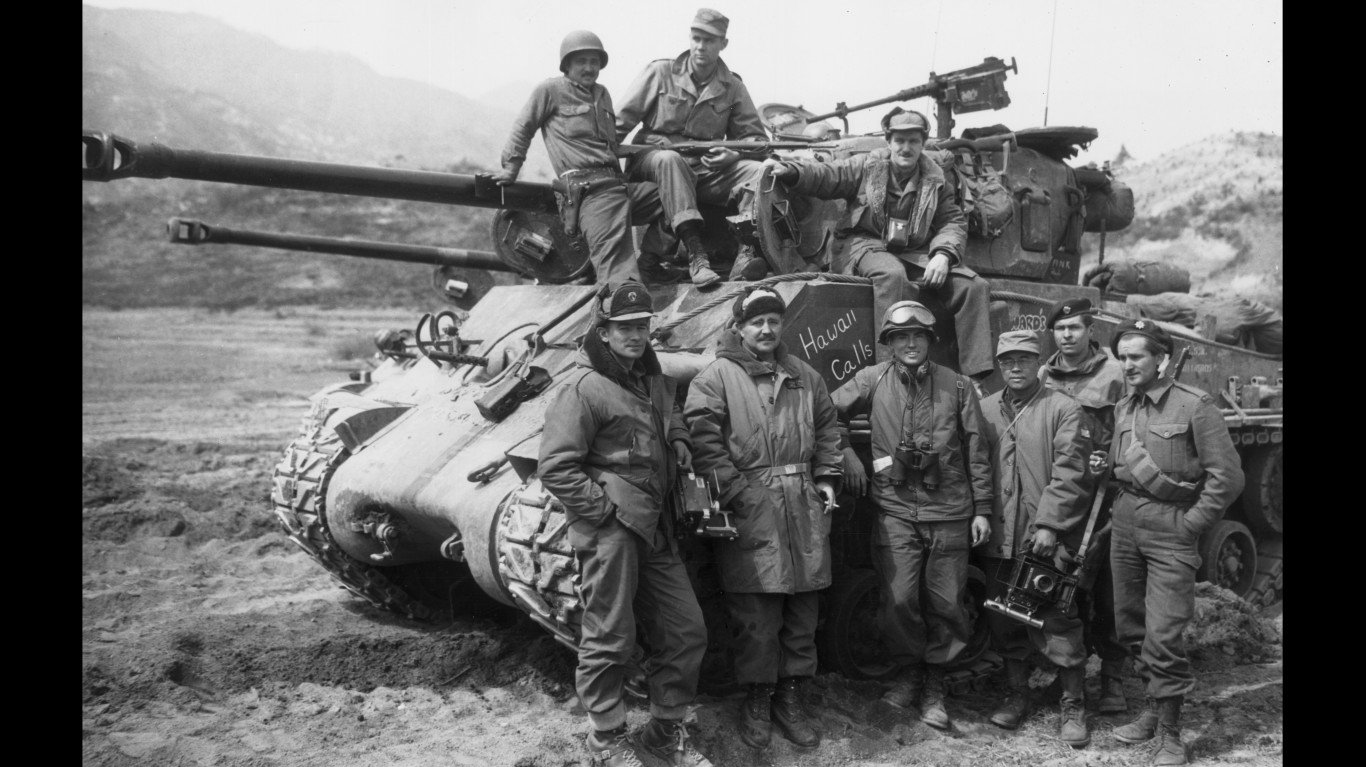

For a large share of its nearly 250-year history, the United States has been at war. While the history books tend to shed a positive light on the nation’s conflicts, the country has had its share of defeat, as well as victory. (Also see, 19 wars Russia has lost from Ivan the Terrible to Vladimir Putin.)
To find out how every war in American history ended, 24/7 Wall St., used material from Britannica, U.S. naval history sources, History, the National Archives, and various media sources. Many of the major wars and battles that are often grouped together as “American Indian Wars” have been listed independently to respect the fact that the Native American nations involved were largely separate entities. Minor American interventions in wars in other countries such as the Boxer Rebellion have not been included, as have American wars that have been fought almost solely by drone attack with no ground forces.
The U.S. has fought wars for independence (American Revolution); to preserve the republic (War of 1812, Civil War); keep international trade flowing (Barbary Coast war); for national expansion (Mexican-American and Spanish-American wars); for democratic ideals (both world wars); to stop communism (Korea, Vietnam); and combat terror (Iraq, Afghanistan).
Most Americans were, and are, supportive of the objectives for fighting those wars. For other conflicts involving the U.S. military, the motives were at best dubious and at worst shameful. (These are cities destroyed by the USA in World War II.)
The United States engaged Native Americans in many conflicts throughout its history, many of which were provoked by the U.S. reneging on treaties forged with indigenous peoples.
Since the beginning of the 20th century, the United States has intervened and sometimes invaded Latin American countries, toppling governments not favorable to the U.S. (and its business interests) and installing regimes more acceptable to America.
In the case of the Philippines insurrection after the Spanish-American War, the United States refused to accept Filipino sovereignty and fought Filipino guerrillas, responding to an imperialist impulse that was supposed to be anathema to American ideals.
Click here to see how every war in US history ended.
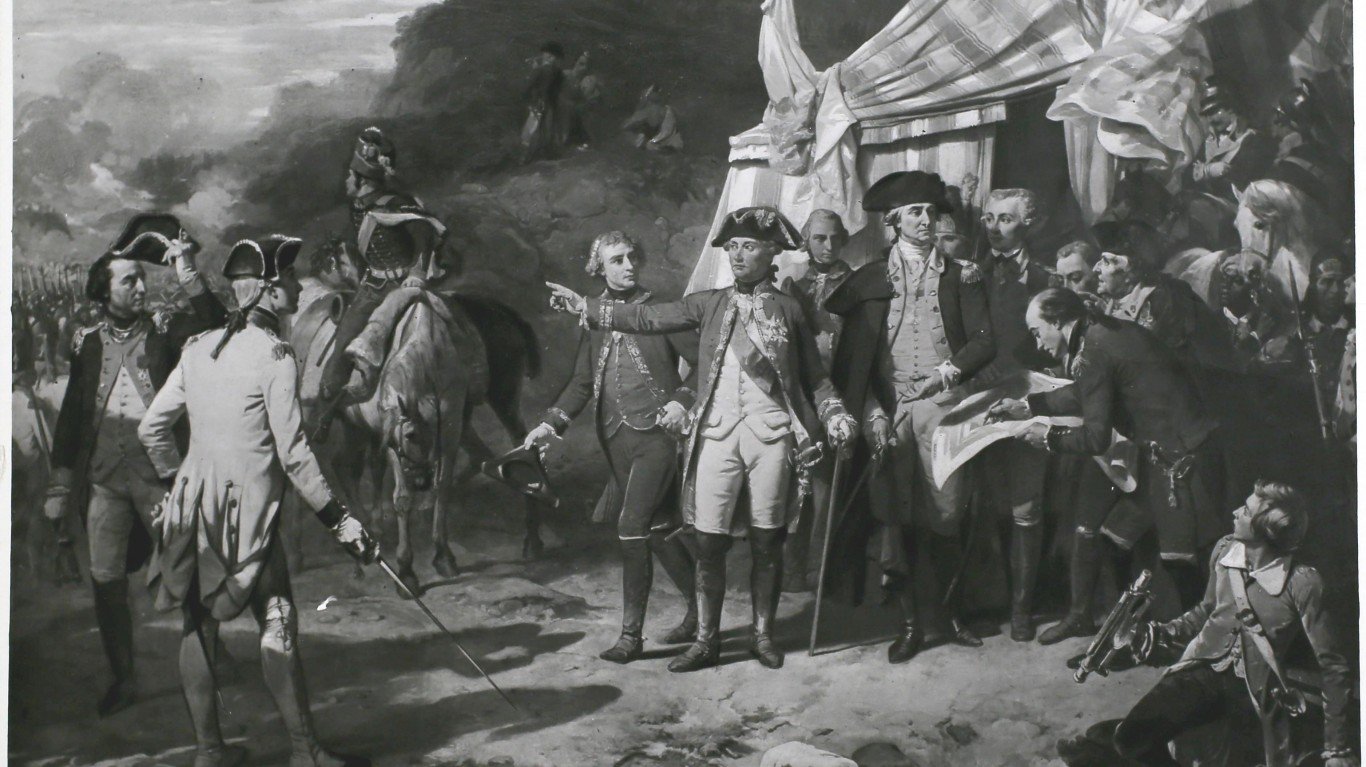
American Revolution (1775-1783)
> Date ended: Sep 3, 1783
> How: Treaty of Paris
The result of the American Revolution was the creation of the United States, which is now the oldest democracy in the world. Great Britain, the most powerful nation in the world at the time, officially recognized the new nation and relinquished the 13 colonies located on the East Coast that became the United States.
[in-text-ad]
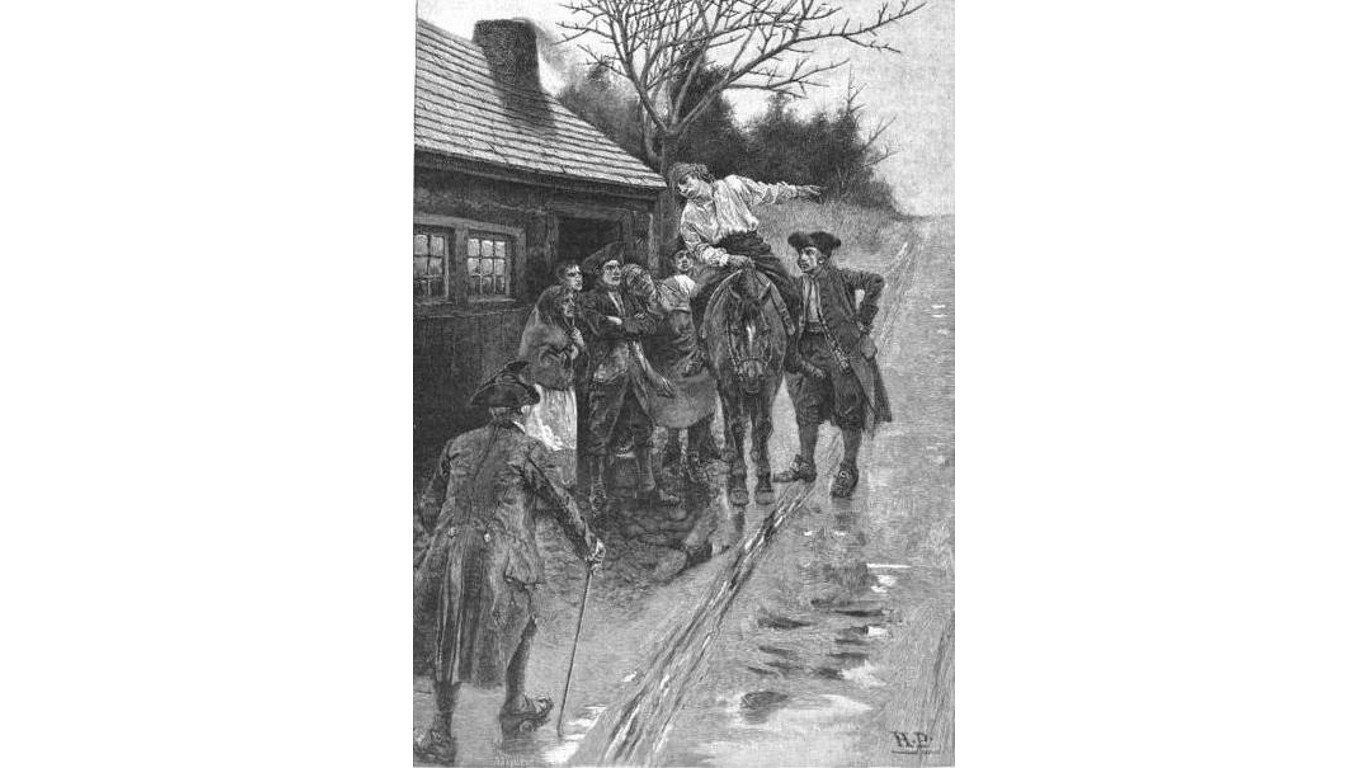
Cherokee-American Wars (1776-1794)
> Date ended: Nov 7, 1794
> How: Treaty of Tellico Blockhouse
Cherokee-American Wars, also called the Chickamauga Wars, were conflicts between Cherokee Native Americans and American settlers that sometimes escalated into full-scale battles. These occurred along the Cumberland River in Middle Tennessee and in Kentucky territories, as well as the colonies of Virginia, North Carolina, South Carolina, and Georgia. The Native Americans were allied with the British during the American Revolution and also with the Spanish.
The Treaty of Tellico Blockhouse did not require any more land concessions by the Cherokee, and effectively ended the fighting.
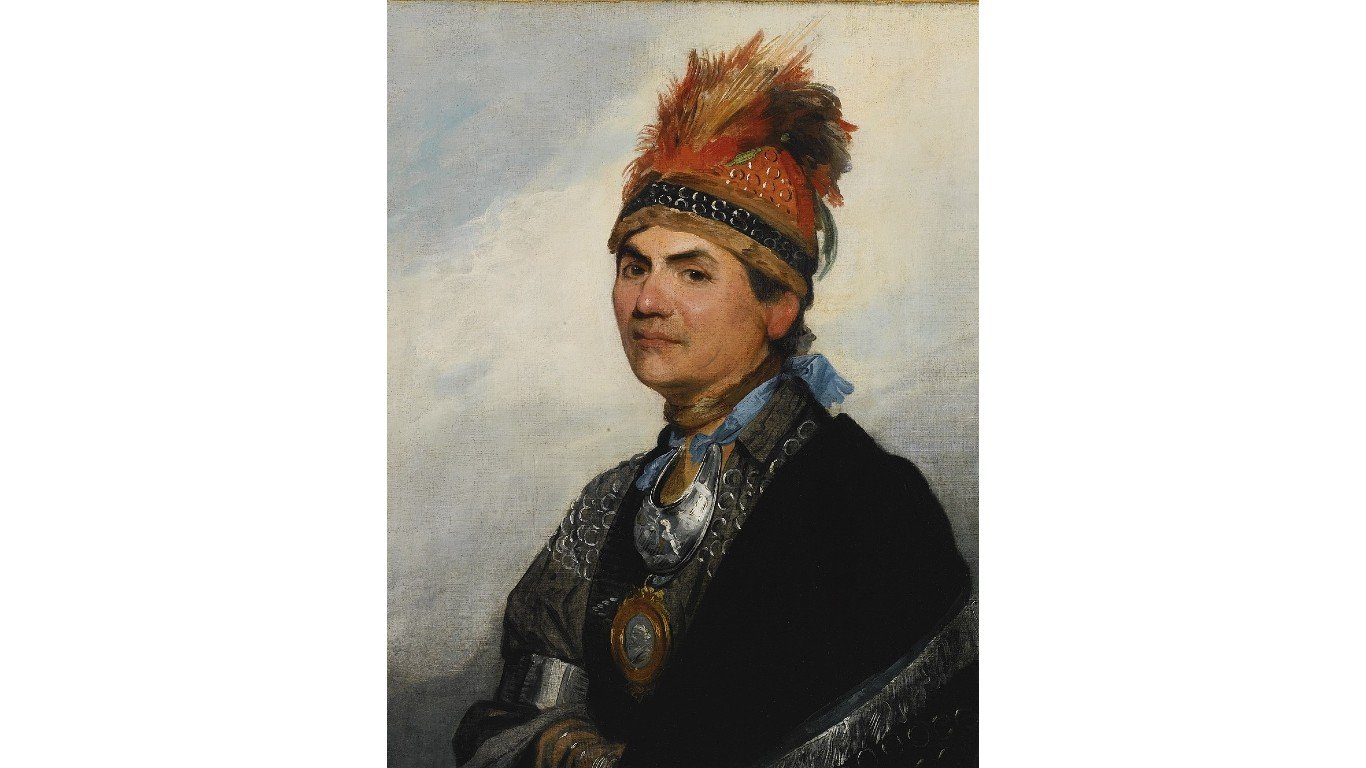
Northwest Indian War (1785-1793)
> Date ended: Aug 3, 1795
> How: Treaty of Greenville
Fighting against several Native American nations continued after the Treaty of Tellico Blockhouse. It ended in 1795, when the northern allies of the Lower Cherokee in the Western Confederacy signed the Treaty of Greenville with the United States.
The accord compelled the defeated Native nations to cede the territory that became the state of Ohio and part of what became the state of Indiana to the United States. They also had to acknowledge that the United States, not Great Britain, was the dominant power in the Northwest.
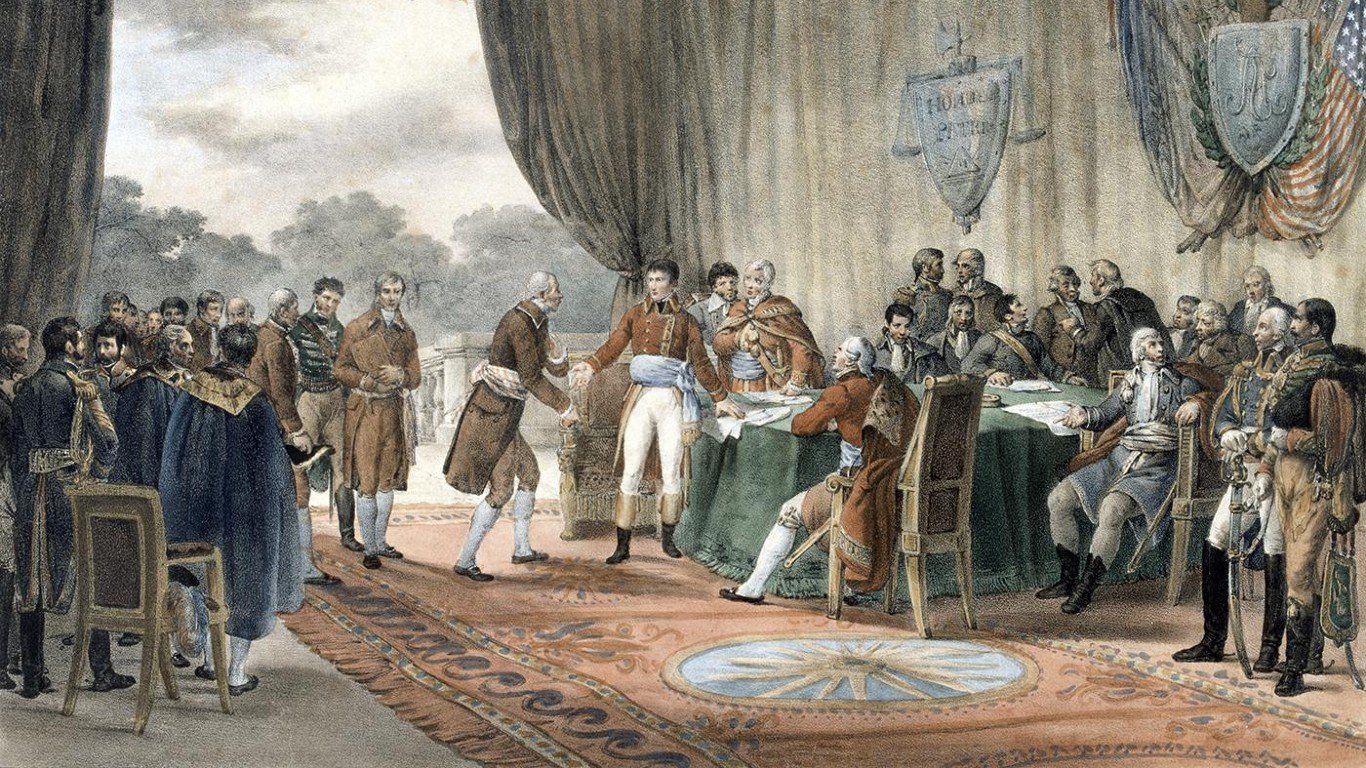
Franco-American War (1798-1800)
> Date ended: Sep 30, 1800
> How: Convention of 1800
Hostilities broke out in 1798, when the United States stopped paying debt to France for its role in helping the U.S. win the American Revolution. America contended that it owed money to the French crown, and since France was no longer a monarchy because of its own revolution, the U.S. believed it did not have to resolve the debt. France responded by seizing American merchant ships, which had no protection since the U.S. Navy had been dissolved by 1785. The U.S. rebuilt its navy, and in cooperation with the Royal Navy, reduced French privateering.
[in-text-ad-2]
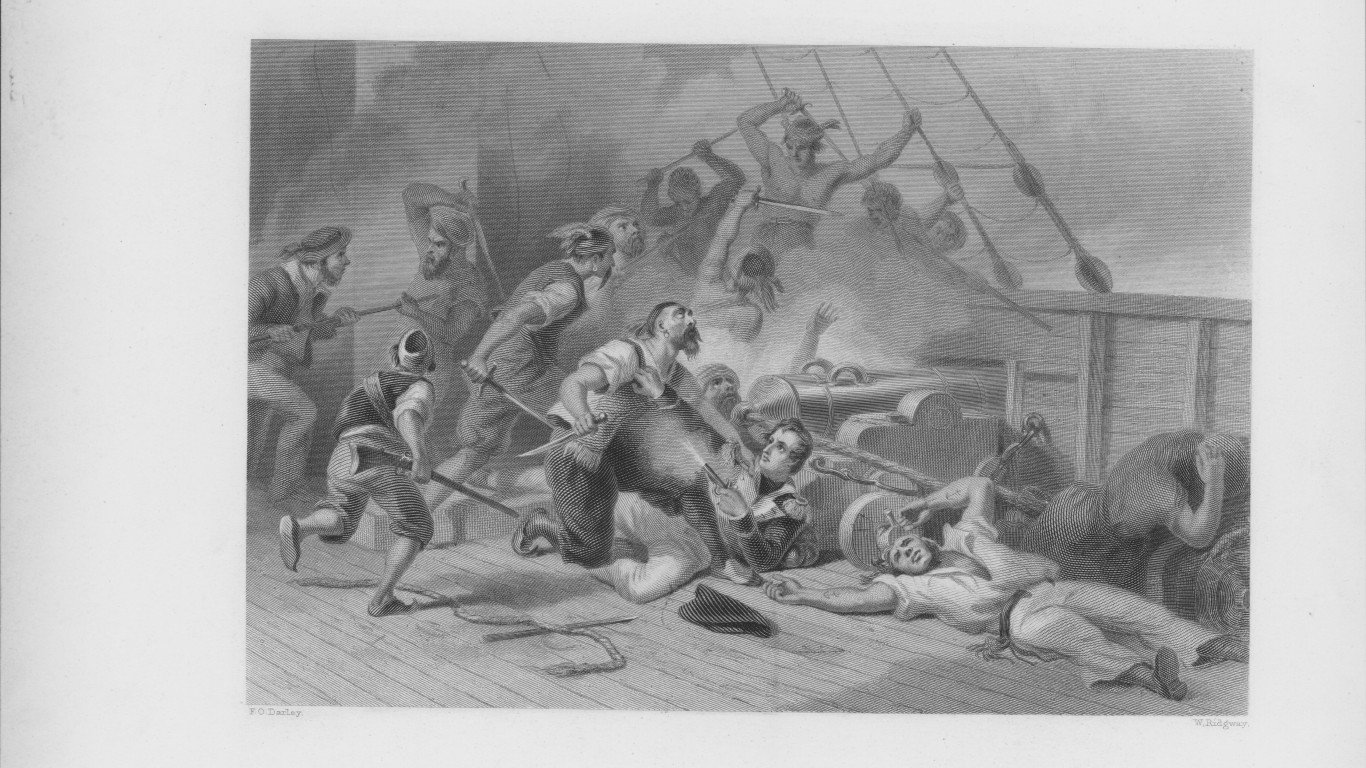
Barbary Wars (1801-1805, 1815)
> Date ended: June 10, 1805
> How: Peace treaty signed by the pasha of Tripoli
The Barbary War, from 1801 to 1805, broke out between the U.S. and the Barbary States of Algeria, Tunis, Tripoli, and Morocco. Pirates from those countries raided passing ships in the Mediterranean and held passengers and sailors for ransom. U.S. ships had been protected by Britain’s navy until 1775, and because the U.S. did not have a large enough navy to shield its merchant ships, America had to pay tribute to the privateers. When the U.S. refused to pay tribute to the pasha of Tripoli in 1801, that state declared war on America.
After a series of U.S. sea and land victories, a peace treaty was signed in 1805. Another war with the Barbary States would break out a decade later and last just three days, ending in an American victory.
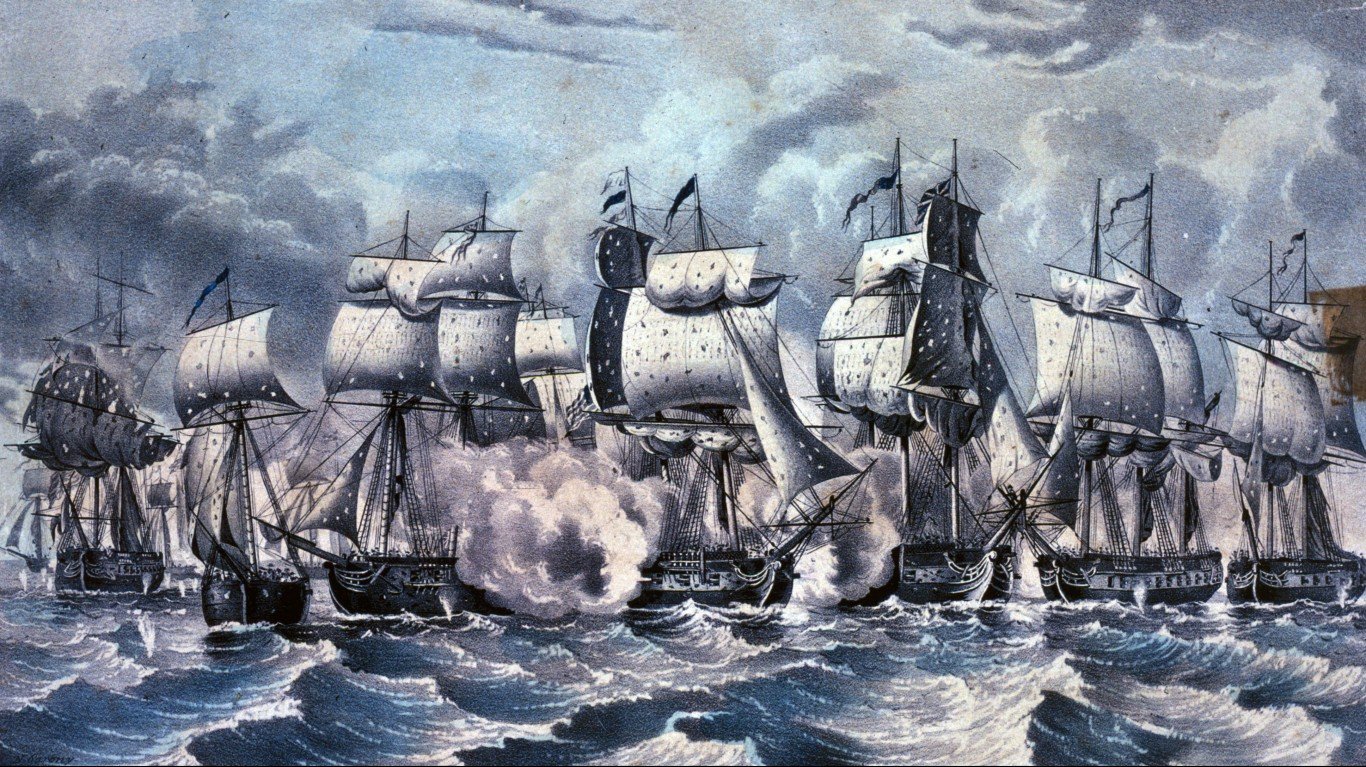
War of 1812 (1812-1815)
> Date ended: Feb 16, 1815
> How: Treaty of Ghent
The War of 1812 was fought against Great Britain because the United States claimed the British Empire was disrupting trade with France, which was at war with Great Britain, and the British were coercing American sailors to join the Royal Navy. The British also were supporting Native American tribes along the Great Lakes who were battling American settlers.
The war did not go well for the U.S. on land. America had ambitions of conquering British-held Canada, but its invasions were thwarted. The British won land battles and occupied Washington, D.C., setting much of the city on fire.
The U.S. had better success at sea, winning naval engagements on the Great Lakes. There was no clear winner in the War of 1812, though the young American nation did retain its independence. The nations ratified the Treaty of Ghent in 1815, ending the conflict.
[in-text-ad]
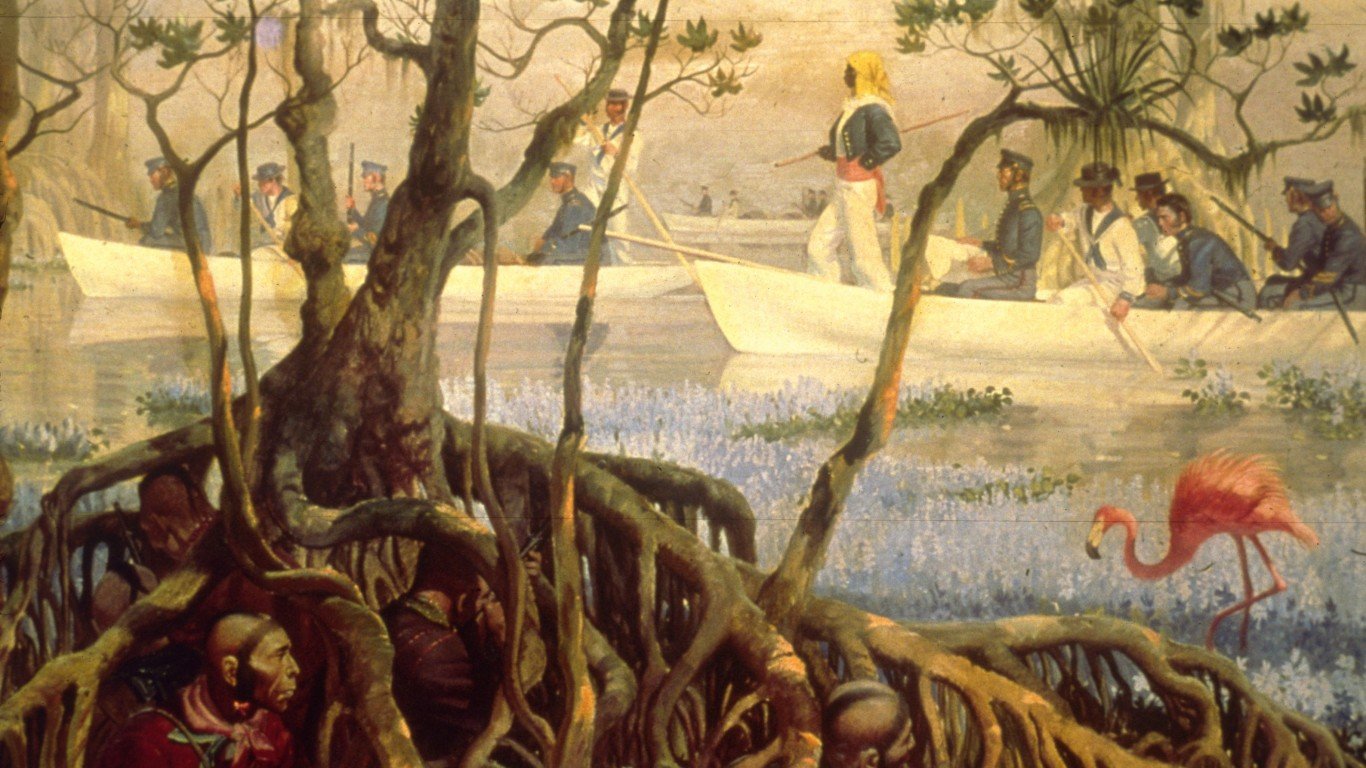
Seminole Wars (1817-1858)
> Date ended: May 8, 1858
> How: Multiple bands of Seminoles agreed to leave Florida
The Seminole Wars were a series of conflicts in which the U.S. government forcibly removed the Seminole people out of Florida. The Seminole people had been in conflict with Americans in Florida ever since the British had occupied the area, and they encouraged the Native Americans to fight newly arrived American settlers.
Americans wanted the Seminoles to move west of the Mississippi River to what is today Oklahoma and arranged treaties with Native Americans to do so. The Native Americans believed they were tricked and coerced into signing the accords and more fighting broke out in the 1830s. The Seminoles kept up their resistance until their warriors and leaders were depleted. The few survivors were removed to the territory in the west.
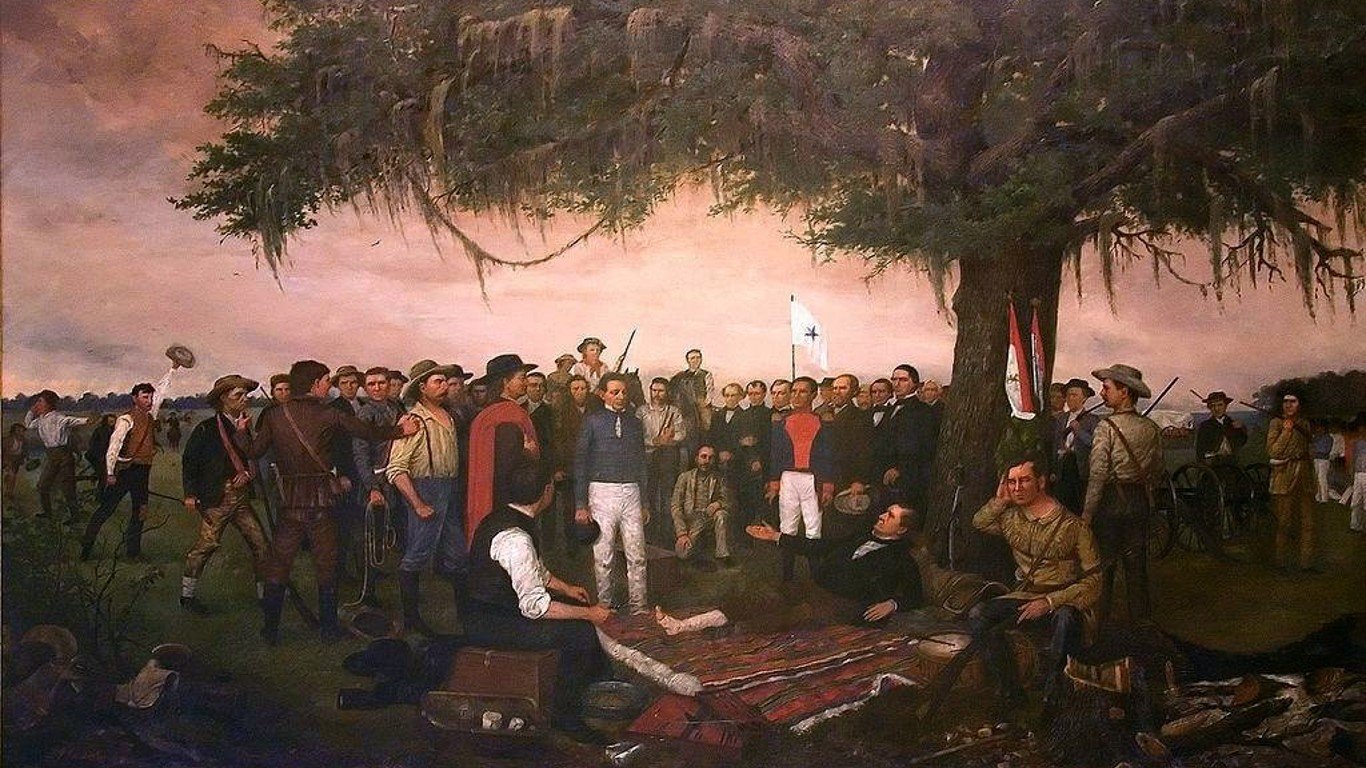
Texas Revolution (1835-1836)
> Date ended: May 14, 1836
> How: Treaties of Velasco
It was during the Texas Revolution, when Texans tried to throw off Mexican rule, that the Battle of the Alamo took place and became part of the Texas lore. After Texas declared independence, Mexican dictator Antonio López de Santa Anna tried to suppress the rebellion, ruthlessly killing unarmed Texans.
Santa Anna marched east and was defeated and captured by a Texan army at San Jacinto. He signed the Treaties of Velasco in which Mexico recognized Texan independence, and he agreed not to take up arms against Texas. Both sides violated the terms of the accord, and Mexico never recognized an independent Texas. The new republic would eventually be annexed by the U.S. in 1845, igniting a war with Mexico.
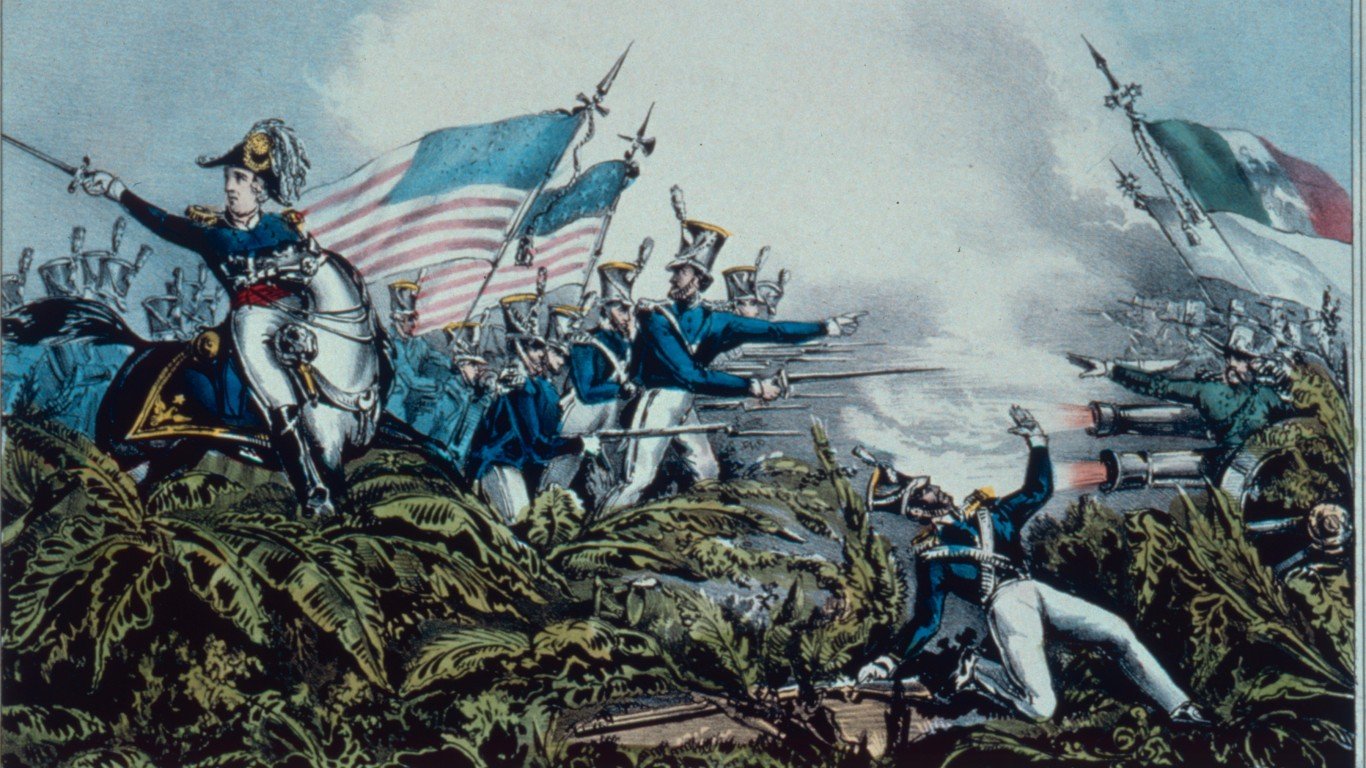
Mexican-American War (1846-1848)
> Date ended: Feb 2, 1848
> How: Treaty of Guadalupe Hidalgo
The Mexican-American War was fought from 1846 to 1848. Mexico was politically conflicted and militarily unprepared for war. The U.S. was led by President James K. Polk, who believed America had a “manifest destiny” to extend across North America to the Pacific Ocean. The war began over U.S. intentions of annexing newly independent Texas, which Mexico said would start a war.
A series of American victories led to the Treaty of Guadalupe Hidalgo, establishing the Rio Grande as the U.S.-Mexican border. Mexico recognized the American annexation of Texas in an agreement in which Mexico had lost about one-third of its territory, including nearly all of present-day California, Utah, Nevada, Arizona, and New Mexico.
[in-text-ad-2]
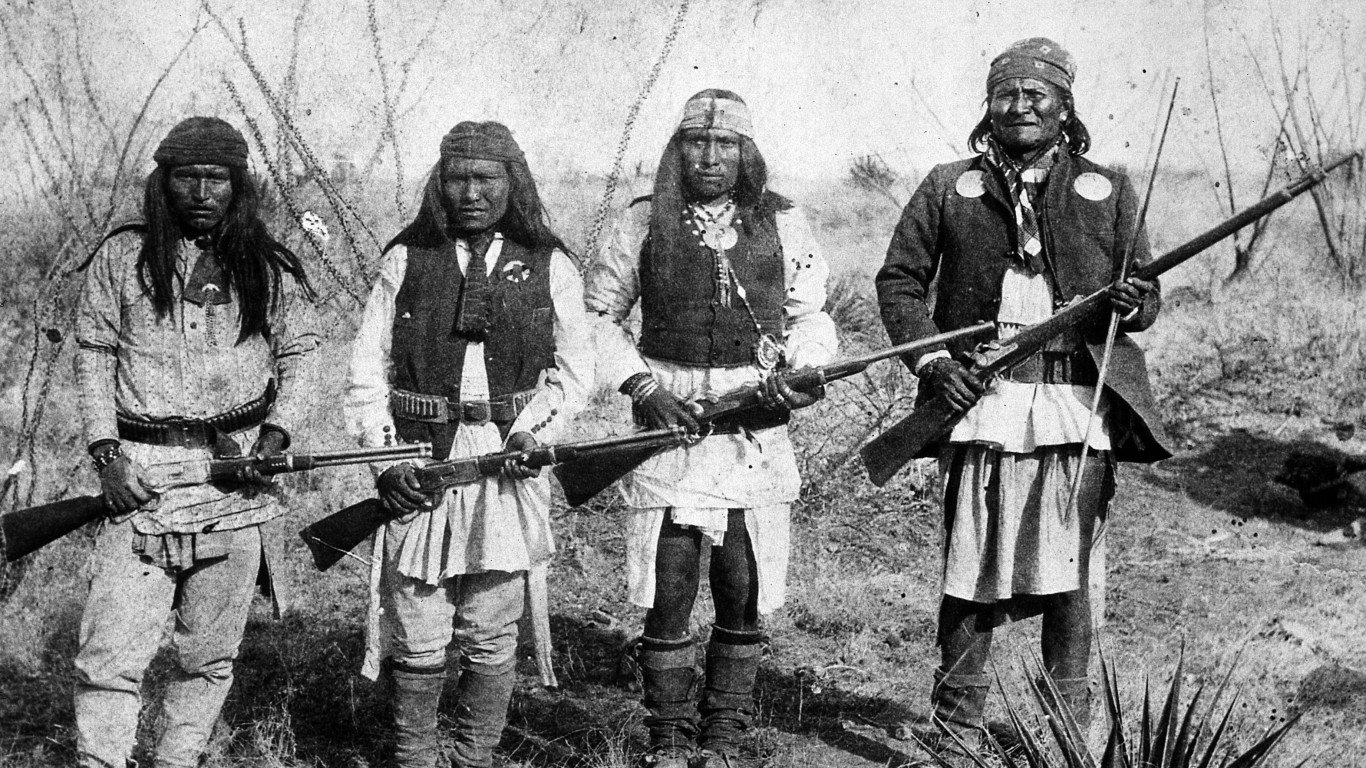
Apache Wars (1849-1886)
> Date ended: Sep 1886
> How: Surrender of Geronimo
The Apache Wars were a series of conflicts between the U.S. Army and various Apache nations that were fought in the American Southwest primarily between 1849 and 1886. The conflicts involved Native American leaders Geronimo, Chato, and Victorio who refused to stay on reservations and raided settlements.
Apache warriors would retreat across the border to Mexico as a safe haven until the U.S. and Mexico signed a treaty allowing troops from either country to pursue Native Americans across the international boundary. Geronimo eventually surrendered to American troops in 1886. Skirmishes between the Apache nation and the United States continued into the turn of the century.

Yakima War (1855-1858)
> Date ended: Sep 23, 1858
> How: Yakama defeated, most tribes forced onto reservations
The Yakama nation under Chief Kamiakin had signed the Treaty of Yakama in the territory of Washington that paid the Native American nation $200,000 annually in exchange for their land. At the time the treaty was signed, Washington Territorial Gov. Isaac Stevens assured the Native Americans that miners and settlers would not trespass on tribal lands. When gold was discovered near British Columbia, miners crossed tribal lands to get to the gold fields, causing conflict with the indigenous people.
The U.S. Army was called in, and over the next three years a series of conflicts occurred. By 1858, the Yakama had lost 90% of their traditional land and were restricted to reservations.
[in-text-ad]
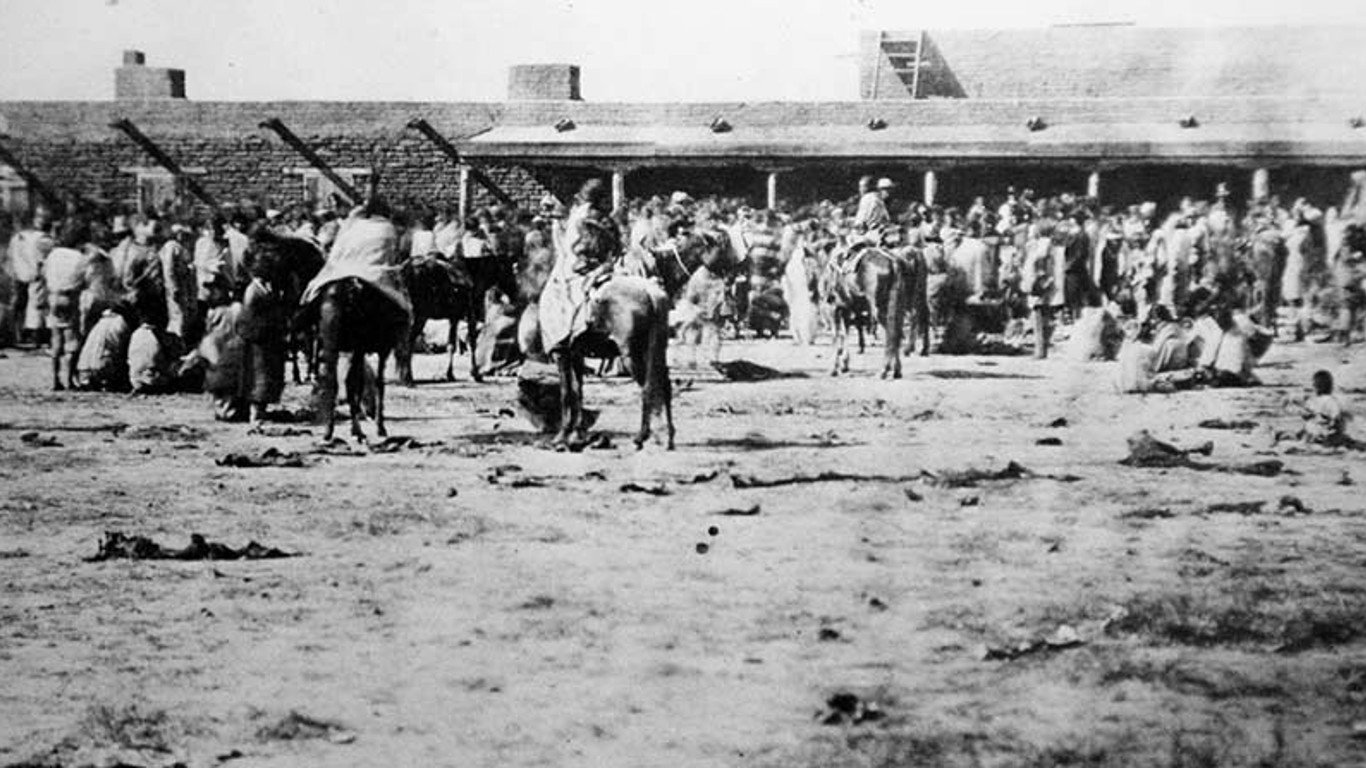
Navajo Wars (1858-1866)
> Date ended: 1866
> How: Last bands take The Long Walk to the Fort Sumner, NM reservation
When the United States defeated Mexico in the Mexican-American War, the U.S. received territory that included Texas, New Mexico, Colorado, Arizona, Utah, Nevada, and California. The Navajo homeland was part of this newly acquired land, and the Native Americans soon came into conflict with the U.S. The U.S. attempted to place the Navajo on a reservation, but they refused. A dispute in which the Navajo claimed Americans shot their livestock led to war.
The Navajo amassed a force that almost overran an American fort. This prompted the U.S. to engage in a total war policy in which the army drove the Navajo from their lands by killing livestock, poisoning wells, and burning crops and dwellings.
Thousands of Navajo retreated to a canyon blocked by the U.S. Army. Eventually, the remaining Native Americans were rounded up and forced to walk to a reservation at Fort Sumter in New Mexico. It was on this long walk during brutal weather conditions that many Navajo died or were killed.
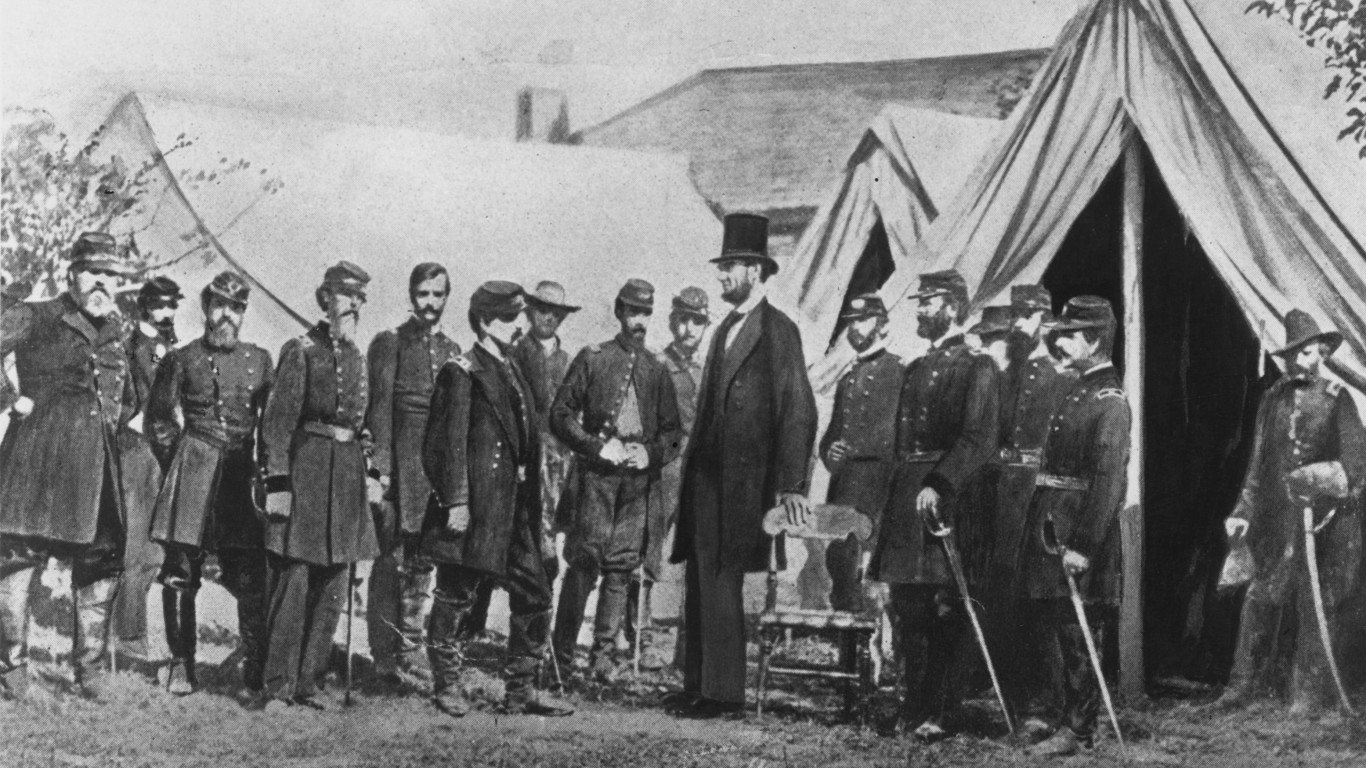
Civil War (1861-1865)
> Date ended: Apr 9, 1865
> How: Gen. Lee surrendered to Gen. Grant at Appomattox Courthouse
The Civil War between the Northern and Southern states had been brewing for decades and eventually broke out over the issue of the extension of slavery into newly admitted states. Eleven Southern states seceded by 1861, shortly after Abraham Lincoln was elected president. The Civil War was the bloodiest conflict in American history. An estimated 620,000 soldiers were killed, about 2% of the nation’s population at the time.
Major combat ended in 1865, when Gen. Robert E. Lee surrendered to Gen. Ulysses S. Grant at Appomattox Courthouse. The South remained a part of the United States, but the region continued to repress the rights of Black Americans for generations.
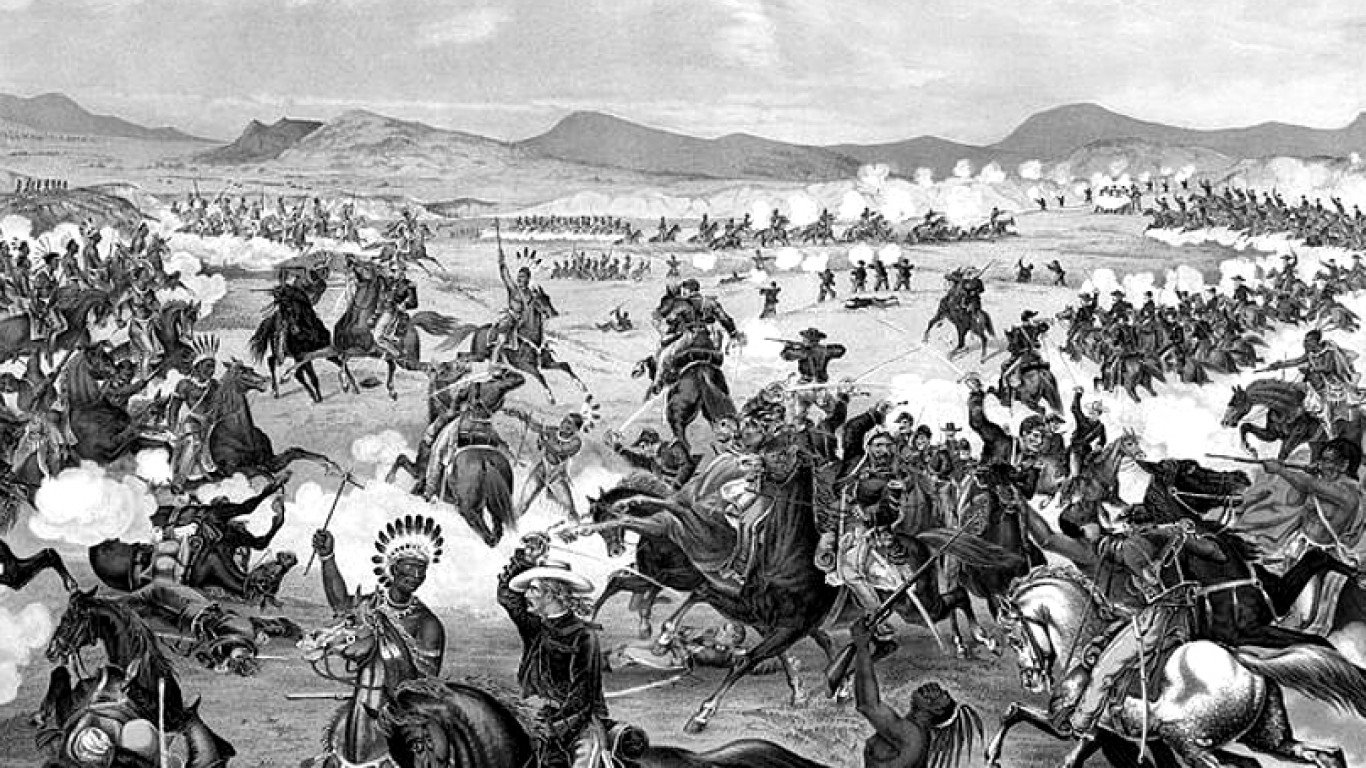
Sioux Wars (1854-1891)
> Date ended: Dec 29, 1890
> How: Massacre at Wounded Knee
The Sioux Wars included some of the most famous and tragic engagements in the long-running conflict between Native Americans and the United States and included renowned Native American leaders such as Red Cloud, Crazy Horse, and Sitting Bull. The fighting took place in the Great Plains states, including Colorado, Wyoming, and the Dakotas.
Historians put the start of the war at 1854, when Sioux warriors killed 31 American soldiers at Fort Laramie in Wyoming. The Sioux would continue fighting over the next 37 years in the Colorado War, Red Cloud’s War, and the Ghost Dance War. The most famous of all the encounters was the Battle of Little Bighorn in which Lt. Col. George Custer and his force were wiped out by the Sioux. Sitting Bull surrendered the following year.
The war between the Sioux and the U.S. lasted until 1890, when the Ghost Dance War concluded with the massacre of Native Americans at Wounded Knee in South Dakota.
[in-text-ad-2]
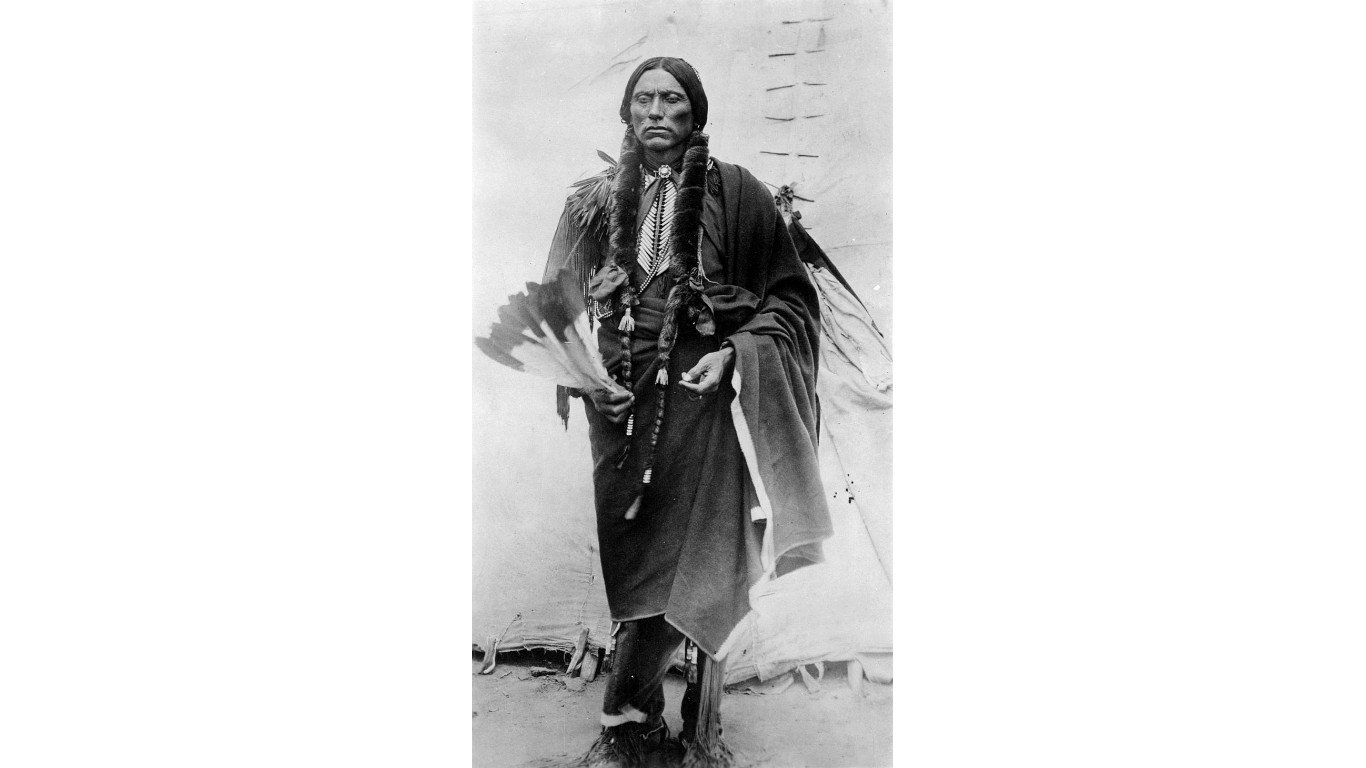
Comanche Campaign (1867-1875)
> Date ended: June 1875
> How: Comanche surrender at Fort Sill
Between 1867 and 1875, U.S. military forces fought against the Comanche people until the Native Americans surrendered and relocated to a reservation. The Medicine Lodge Treaty in 1867 had solidified the reservation system for the Plains Indians, and under President Ulysses S. Grant’s Peace Policy, the U.S. emphasized missionary work and education instead of conflict.
But some elements of the Comanche raided settlements in Oklahoma and Texas. Civil War hero Gen. William T. Sherman chose Ranald S. Mackenzie to confront the Comanche. Mackenzie created a strategy of wearing down the Comanche instead of fighting them in open battle. During his expeditions, he destroyed their camps and crops, much like Sherman’s scorched-earth policy conducted against the Confederacy. The tactics worked and forced the Comanche to surrender at Fort Sill, and they were restricted to reservations in Oklahoma territory.

Nez Perce War (1877)
> Date ended: Oct 5, 1877
> How: Surrender of Chief Joseph
The Nez Perce were a Native American nation located in the Pacific Northwest, Wyoming, and Montana. The U.S. and the Nez Perce agreed to a treaty in 1855 in which the Native American nation would retain 7.5 million acres of ancestral land. But the federal government backed out of the agreement and demanded that the Nez Perce relocate to a reservation in Idaho.
This ignited a war in June 1877 and continued until October 1877 that was fought in what is now Oregon, Idaho, Wyoming, and Montana. The Nez Perce conducted a fighting retreat while moving toward the Canadian border, but the U.S. Army eventually caught up with them 50 miles from Canada, and the Nez Perce, under Chief Joseph, surrendered.
[in-text-ad]
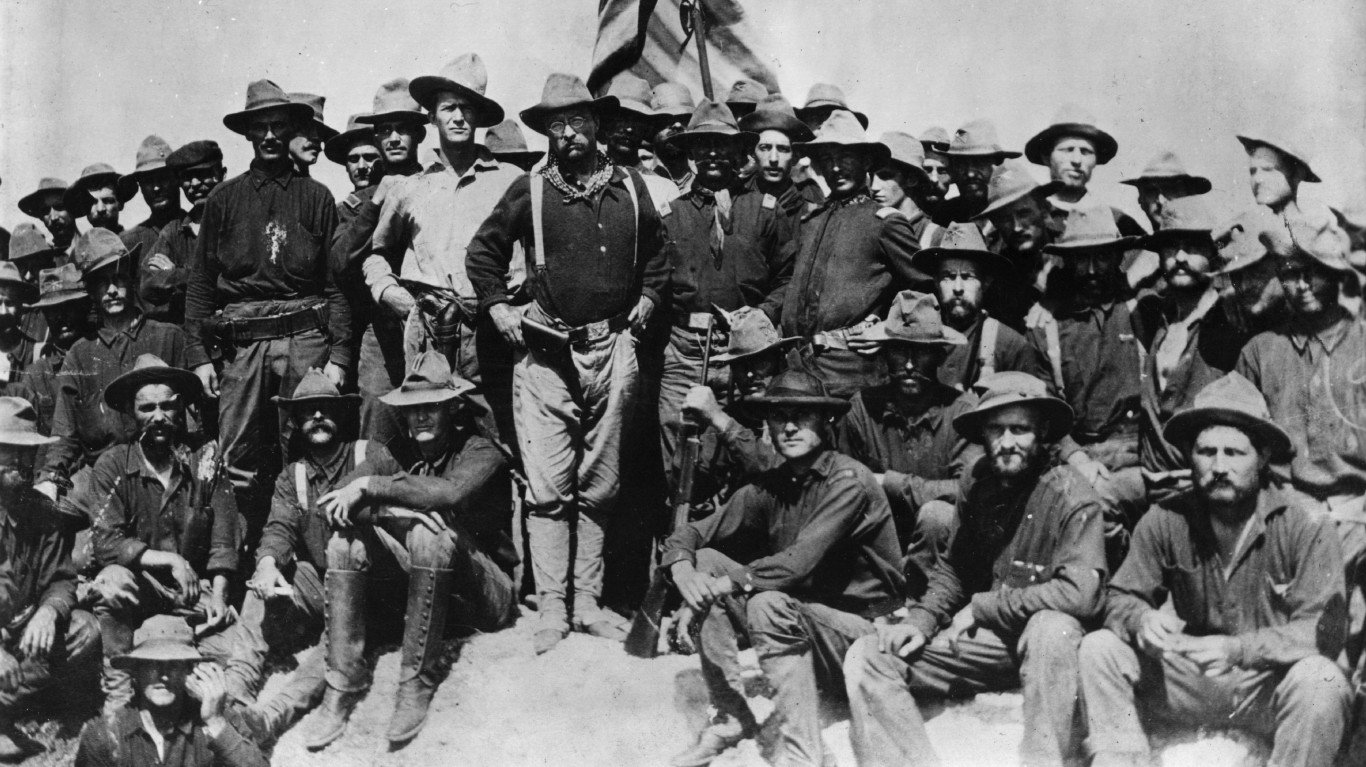
Spanish-American War (1898)
> Date ended: Dec 10, 1898
> How: Treaty of Paris
The Spanish-American War led to the loss of virtually all of Spain’s possessions in the Western Hemisphere and in the Pacific Ocean. It was a brief, one-sided conflict in which the U.S. won every major engagement.
The loss of Cuba, Puerto Rico, Guam, and the Philippines is known in Spanish history as El Desastre (The Disaster), effectively ending Spain’s nearly 400-year era as an empire. The result of the war made the United States a world power.
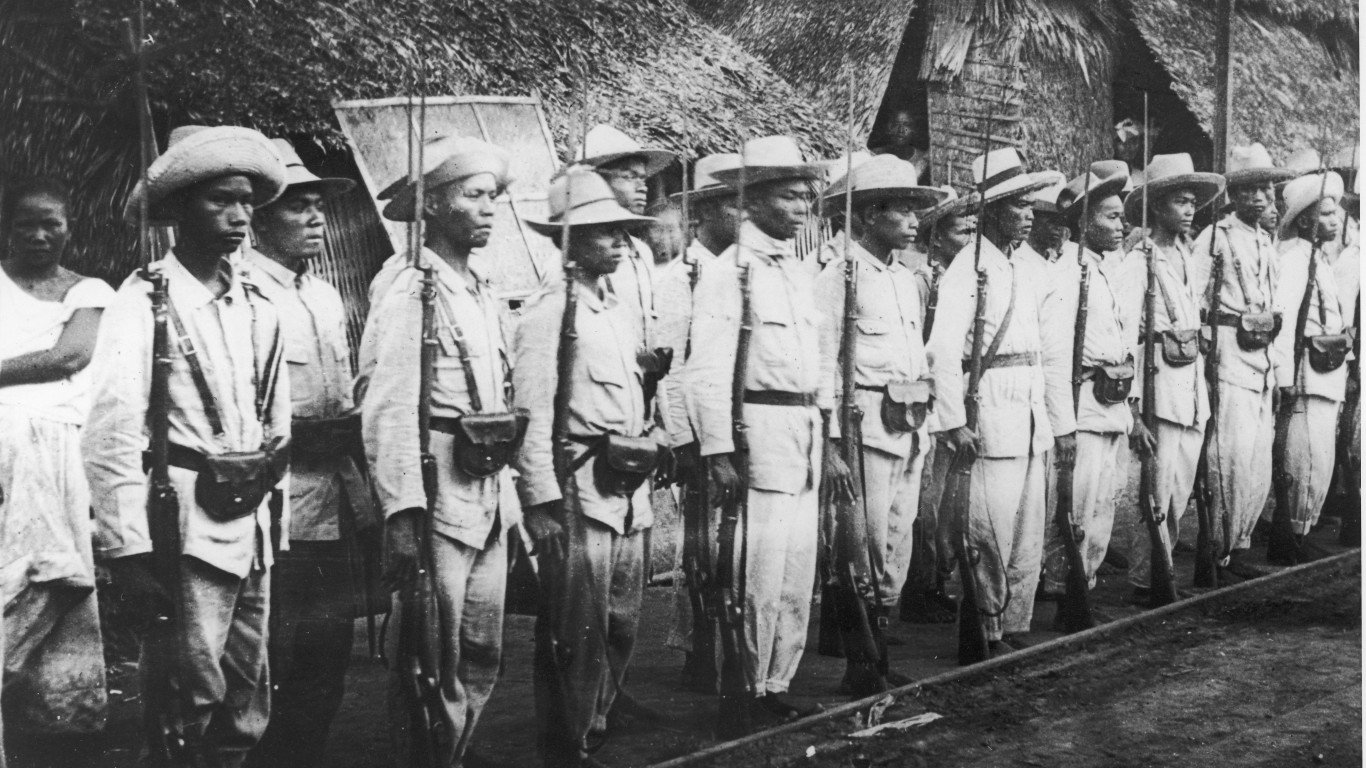
Philippine-American War (1899-1902)
> Date ended: Jul 2, 1902
> How: Philippine Organic Act
The Philippine-American War, a conflict between the United States and Filipino revolutionaries, was an insurrection that was a continuation of the Philippine Revolution against Spanish rule.
After the Spanish were defeated in the Spanish-American War, the Philippines declared its independence. This was not recognized by the United States, which had assumed sovereignty of the Philippines after the defeat of Spain. Fighting broke out, and the conflict deteriorated into a savage guerrilla war with atrocities committed on both sides. The guerrillas were splintered by bickering leadership and the U.S. eventually prevailed, though sporadic fighting would continue for another decade.
The human cost of the rebellion was high: An estimated 20,000 Filipino combatants were killed, more than 200,000 civilians died, and 4,300 Americans died from combat and disease.
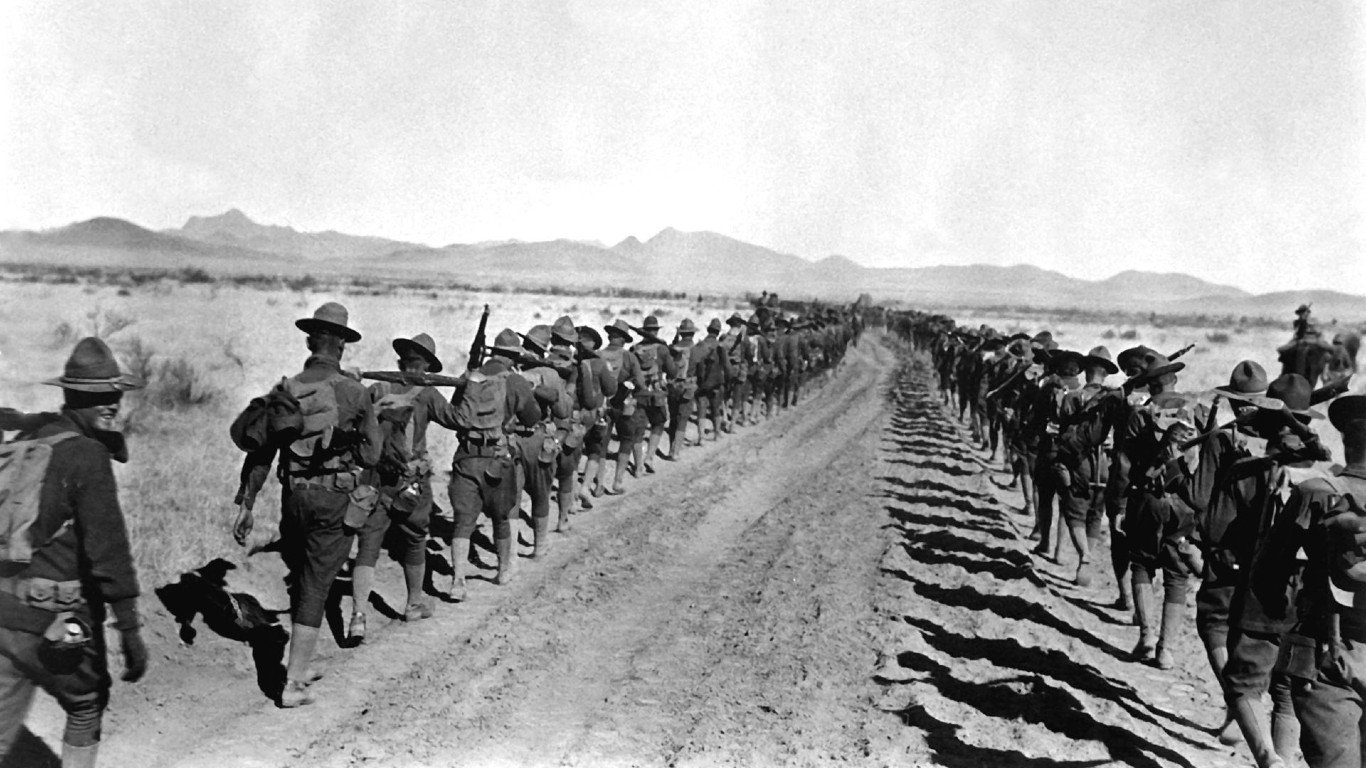
Mexican Border War (1910-1920)
> Date ended: Jun 16, 1919
> How: retreat of Pancho Villa at Battle of Ciudad Juarez
After the Mexican Revolution of 1910, the border between Mexico and the United States became a hot spot. The U.S. deployed troops at the border to keep the fighting among Mexicans on Mexico’s side of the border.
Tensions escalated in 1916, when in January Mexican rebels stopped a train near the town of Santa Isabel in the Mexican state of Chihuahua and killed 18 American passengers working for an Arizona company. Two months later, rebel leader Pancho Villa, in desperate need of supplies, raided Columbus, New Mexico. American cavalry fought the invaders off, but not before the town was heavily damaged with fatalities on both sides.
This began the Pancho Villa Expedition as President Woodrow Wilson ordered Gen. John J. Pershing to invade Mexico with more than 5,000 men to capture or kill Pancho Villa. By 1917, most of the fighting in Mexico was over. The U.S. never captured Villa.
[in-text-ad-2]
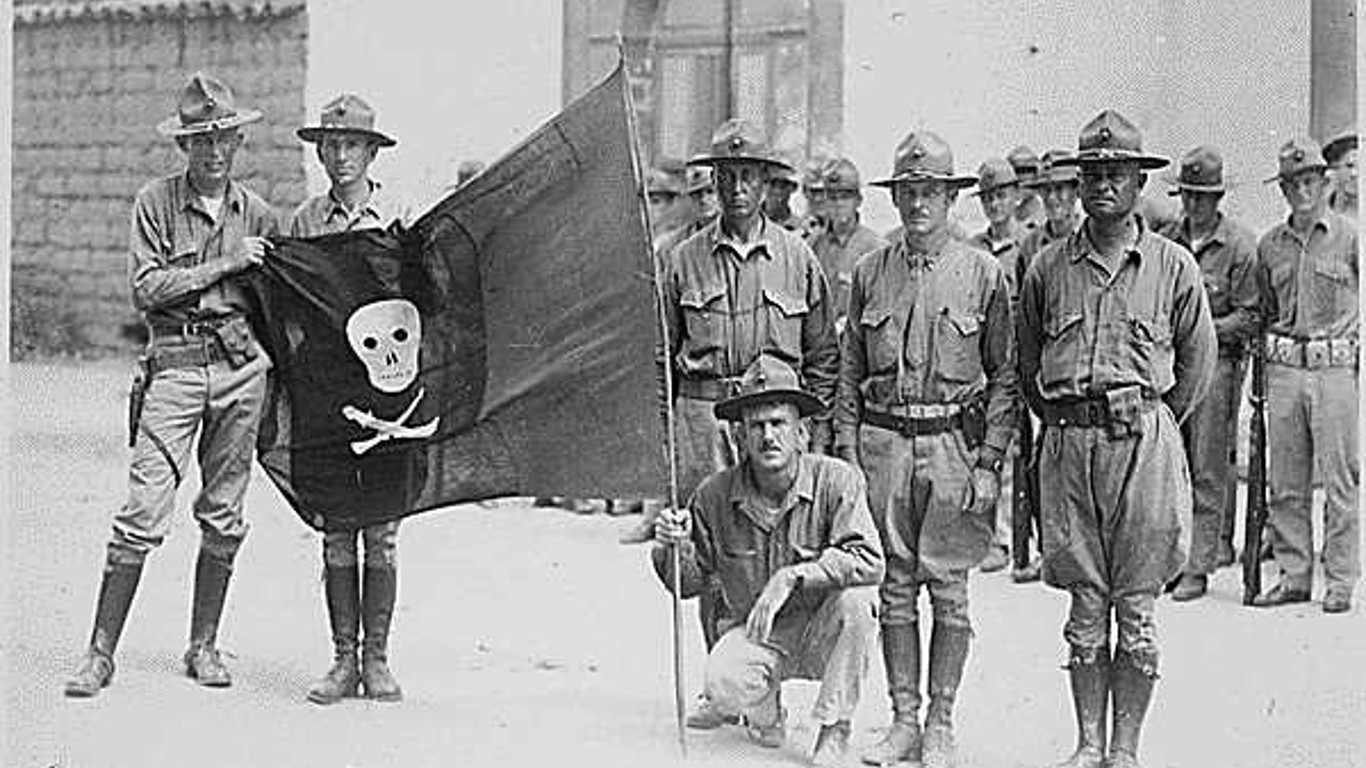
Banana Wars (1898-1934)
> Date ended: 1934
> How: Good Neighbor Policy
Following the Spanish-American War, American foreign policy, buttressed by the Monroe Doctrine, became aggressive, with interventions and military occupation in Latin America during the early part of the 20th century. At various times, the United States occupied Cuba, the Dominican Republic, Nicaragua, Mexico, Haiti, and Honduras. America occupied Haiti from 1915 to 1934. The U.S. also invaded Panama and Puerto Rico. Most of the interventions were conducted under the pretext of protecting American business interests.
U.S. military intervention in Latin America ended in 1934 with President Franklin D. Roosevelt’s “Good Neighbor Policy” that emphasized building better relations. American interventionism in Latin America would resume later in the 20th century and would include destabilizing governments and installing regimes favorable to Washington, D.C.
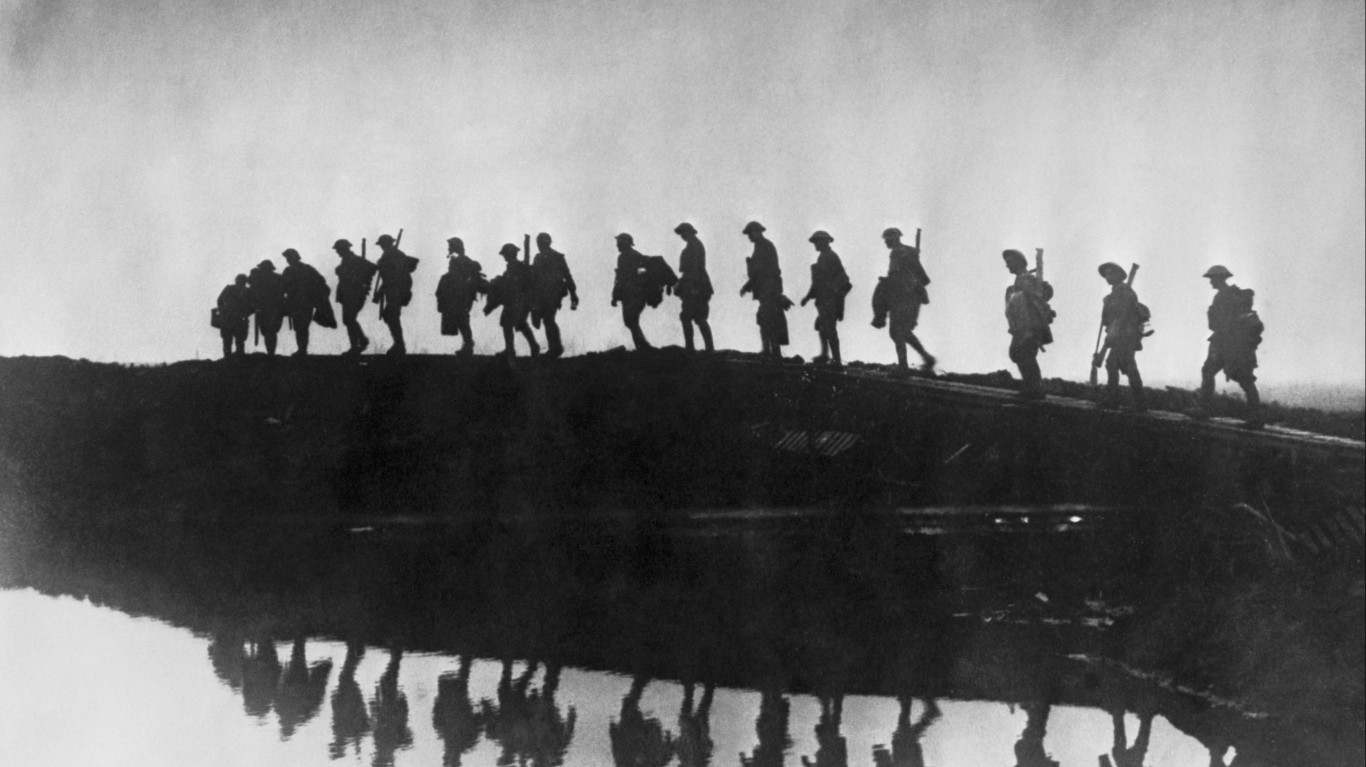
World War I (1917-1918)
> Date ended: Jun 28, 1919
> How: Treaty of Versailles
The United States had stayed out of the Great War that engulfed virtually all of Europe beginning in 1914. But a series of incidents pushed America into the conflict on the side of the Allies – France, Great Britain, and Russia.
The sinking of the British ship Lusitania by a German U-boat in 1915 that resulted in the loss of American lives shocked the U.S. and strained relations with the German Empire. In 1917, the revelation of the Zimmermann Telegram sent by German diplomats to Mexico turned sentiment against Germany. The communique asked Mexico to join Germany and the Central Powers if the U.S. declared war on Germany. The Germans asked the Mexicans to attack the southwestern United States and promised to return land to Mexico lost to the U.S. during the Mexican-American War. Germany’s strategy of unrestricted submarine warfare finally pushed America into declaring war on Germany in April 1917.
The number of U.S. troops and supplies America provided to the war effort helped tipped the balance in favor of the Allies.
[in-text-ad]
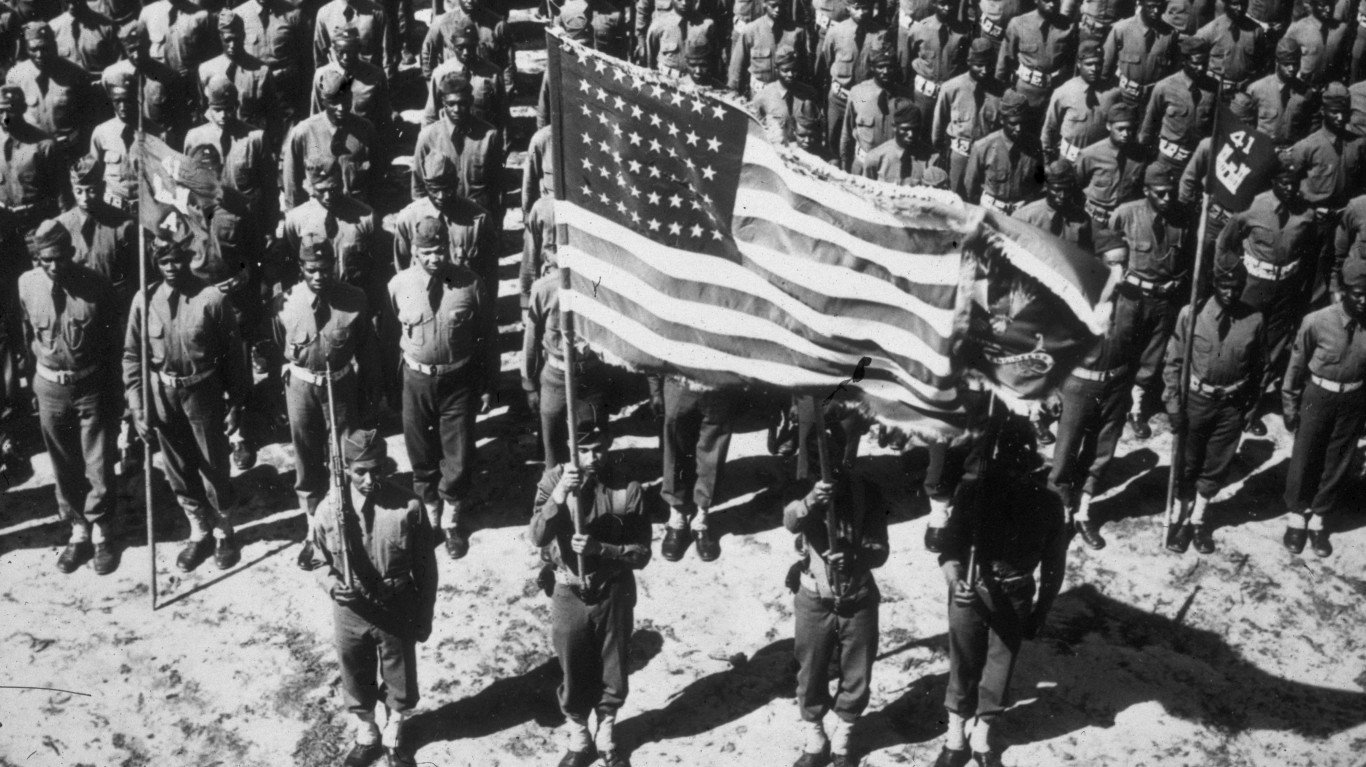
World War II (1941-1945)
> Date ended: Sep 2, 1945
> How: Surrender of Japan
The Third Reich of Nazi Germany formally surrendered to the Allies on May 8, 1945, ending World War II in Europe. The conflict’s legacy remains to this day. In the war’s wake, European cities were shattered and families destroyed. The Nazis also murdered 6 million Jews and targeted other groups, including the Roma, homosexuals, and disabled persons, in an act later called a crime against humanity.
The most destructive war in human history offically ended on Sept. 2, 1945, when the Japanese Empire formally and unconditionally surrendered to the Allies, nearly a month after the U.S. dropped the atomic bombs on Hiroshima and Nagasaki. Until Japan had capitulated, the Asian country had never formally surrendered in its recorded history. The conflict’s result pitted the western Allies and the Soviet Union against each other in the Cold War to follow.
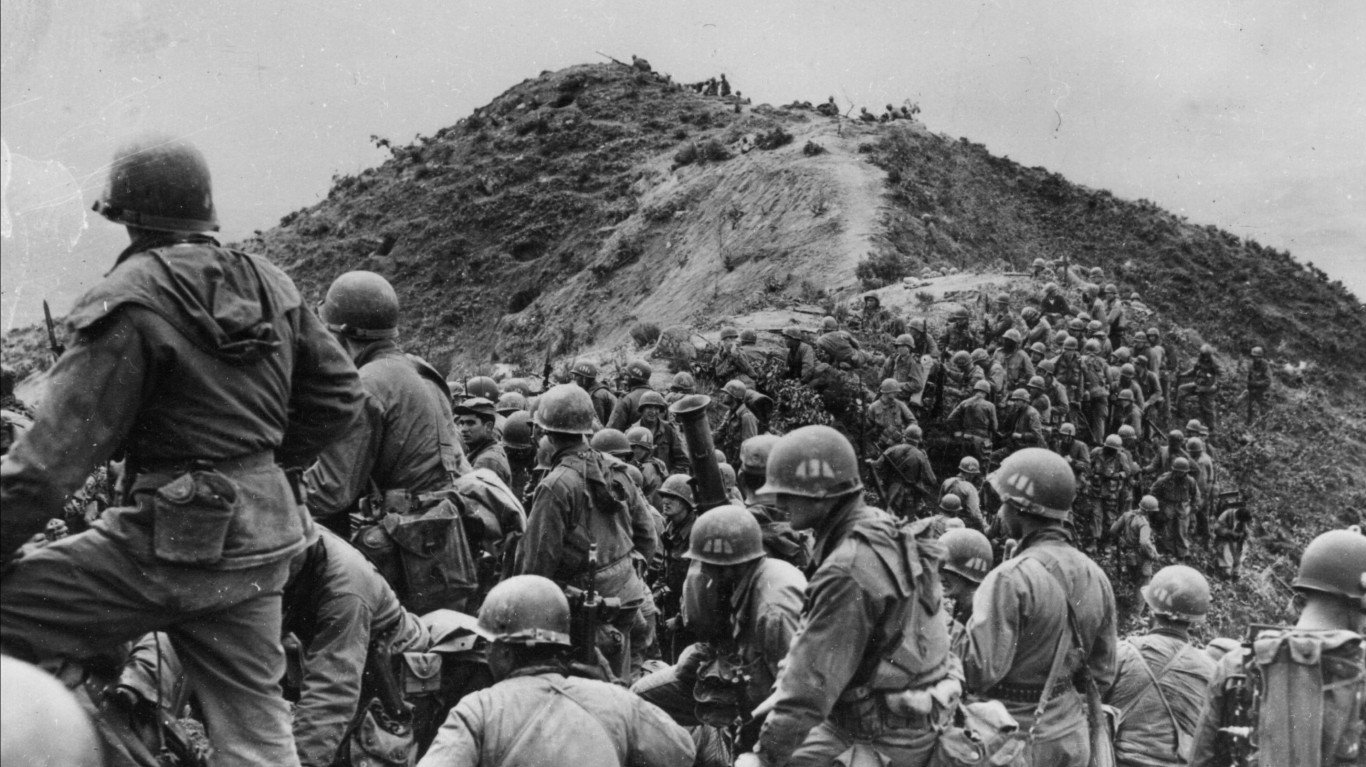
Korean War (1950-1953)
> Date ended: July 27, 1954
> How: Korean Armistice Agreement
The Korean War started in June 1950, when North Korean troops invaded South Korea. It quickly escalated into a conflict involving North Korean and Chinese armies on one side and South Korean and United Nations forces, led by the United States, on the other.
Major fighting stopped in 1953, and an armistice was signed a year later. More than 1 million were killed during the conflict. Though the U.S. military is no longer in an active armed conflict on the Korean Peninsula, there was never an official peace treaty signed between North Korea and South Korea, so the countries are still technically at war, 72 years later. The border at the 38th Parallel remains one of the tensest borders in the world.
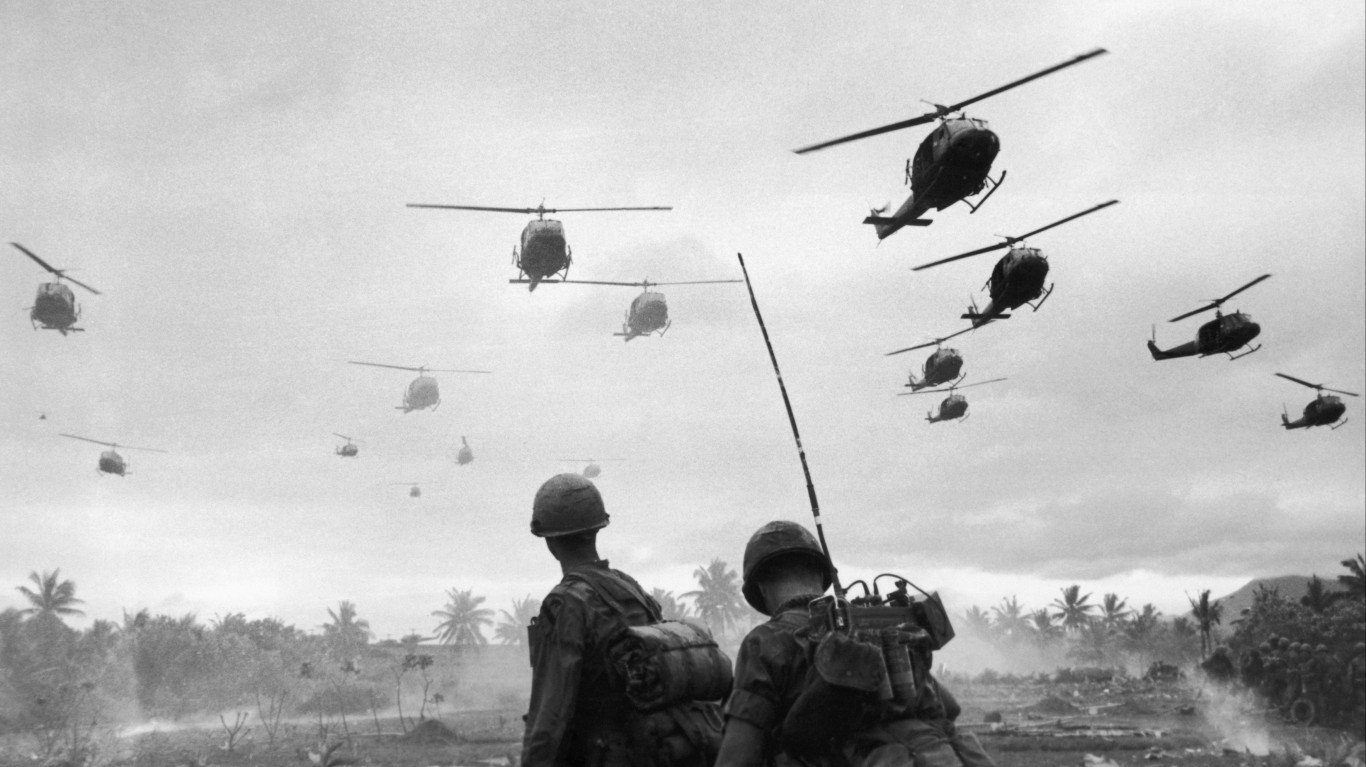
Vietnam War (1955-1975)
> Date ended: April 30, 1975
> How: Fall of Saigon
Even though the Vietnamese prevailed over French colonial rule in 1954, fighting never really stopped in Vietnam, which was divided between the communist north allied with China and the Soviet Union, and the south, allied with the United States.
Communist North Vietnam conducted a prolonged guerrilla campaign to undermine South Vietnam. The U.S. supplied military advisors in the late 1950s and early 1960s and began to send troops in force starting in 1964. In addition to ground forces, the U.S. military conducted airstrikes using conventional bombs and defoliants to eradicate the jungle.
American military involvement in Vietnam ended in 1973, and two years later, the North Vietnamese prevailed as Saigon fell. About 58,000 U.S. soldiers died in Vietnam.
[in-text-ad-2]
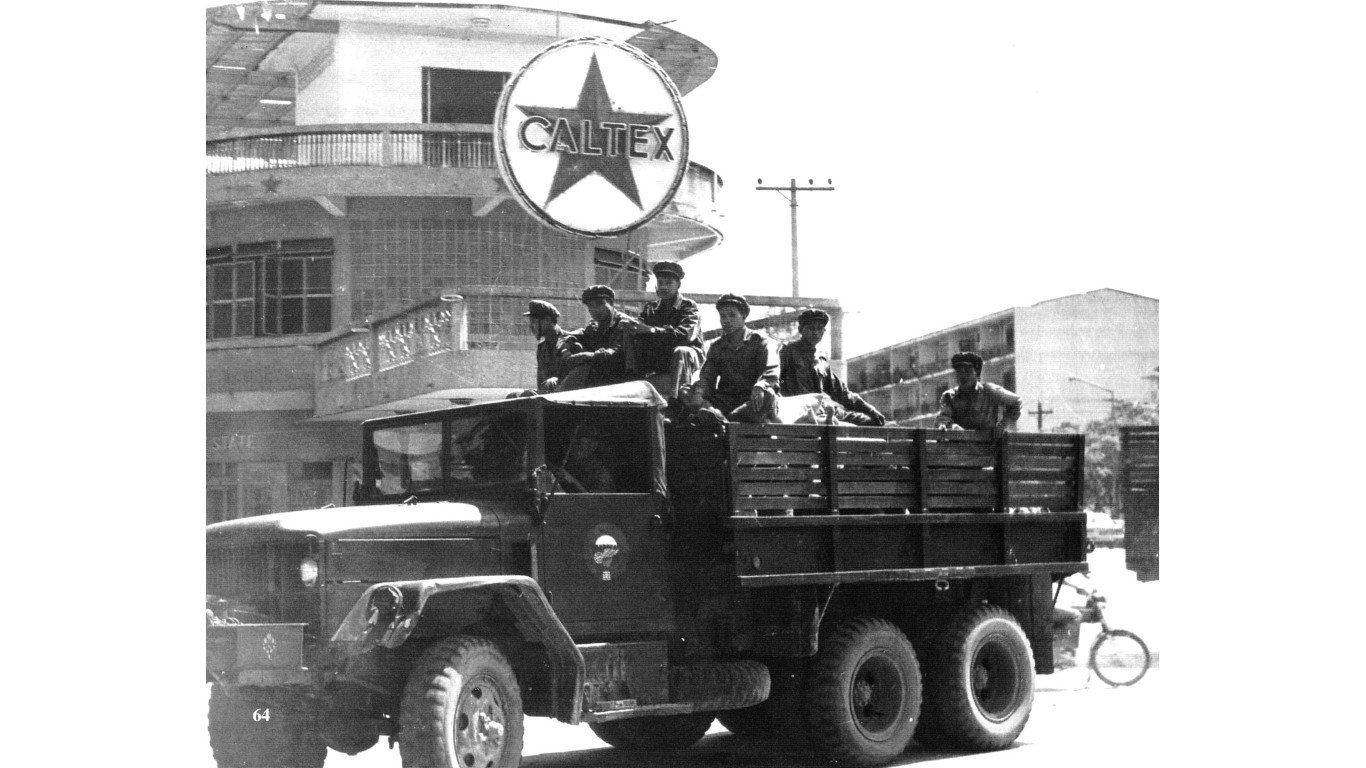
Lao Civil War (1959-1975)
> Date ended: Dec 2, 1975
> How: Fall of Vientiane
The Lao Civil War was fought between the Communist Pathet Lao and the Royal Lao Government. The war served as a proxy conflict between the Cold War superpowers the United States and the Soviet Union.
Laos, neighboring Vietnam, had been a French colony until 1954, when the French were defeated in Vietnam and gave up their colonies in Southeast Asia. A Laotian coalition government failed to stabilize the country and civil war broke out in 1959.
The communist forces under Ho Chi Minh were using roads through officially neutral Laos to supply Viet Cong guerrillas fighting the South Vietnamese. The CIA conducted a secret war in Laos in 1964 with a covert army drawn from indigenous tribes to try and divert communist troops from entering Vietnam. The U.S. also conducted one of the longest and most destructive aerial bombing campaigns in history.
The secret war ended in 1975, the same year the Vietnam War ended. The communist Pathet Lao, supported by the North Vietnamese Army, seized Laos two years after the United States withdrew from South Vietnam in 1973.
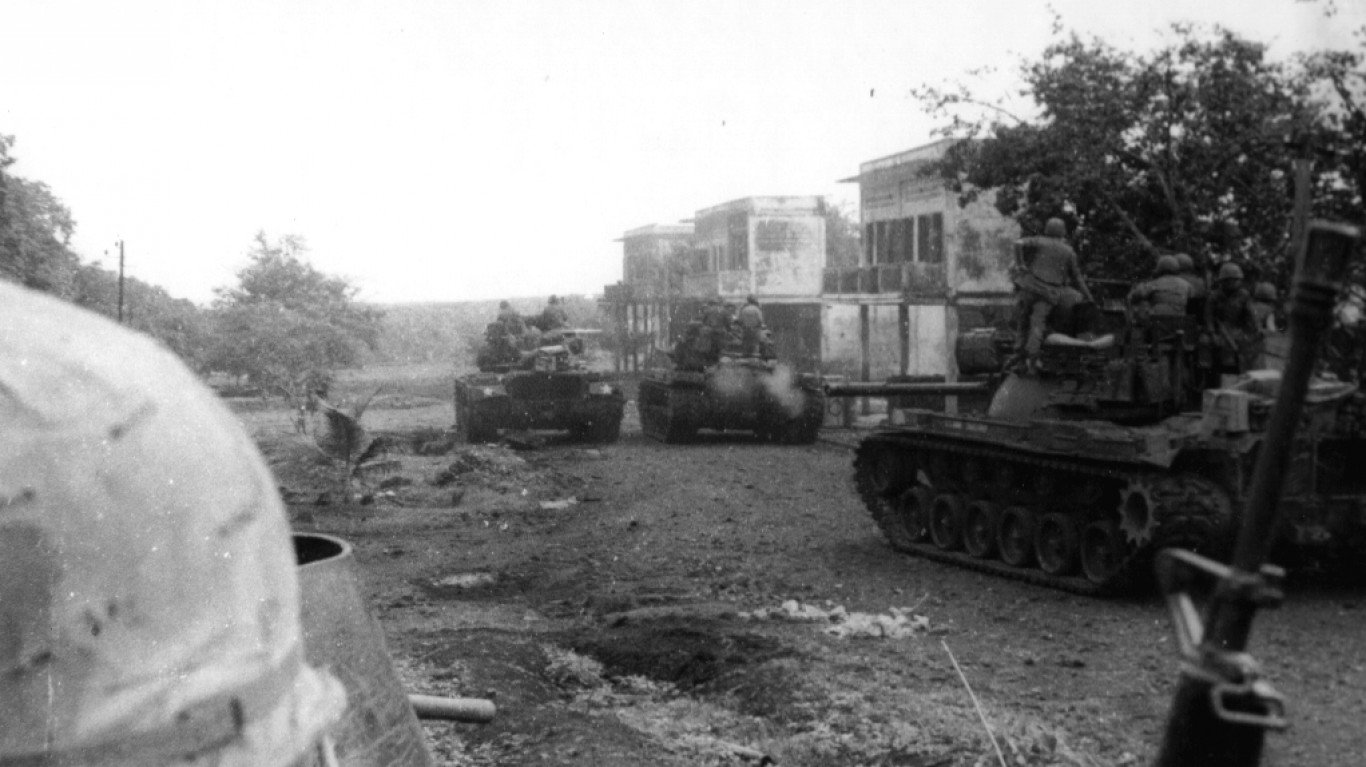
Cambodian Civil War (1967-1975)
> Date ended: Apr 17, 1975
> How: Fall of Phnom Penh
The Cambodian Civil War began in 1967, when peasants revolted against tax collectors. The unrest spread to other parts of the country, and the ranks of local communist organizations swelled.
Since the mid-1960s, Prince Sihanouk had allowed Cambodia to be a sanctuary for the North Vietnamese military attacking South Vietnam. This rankled the U.S., which conducted reconnaissance and low-level bombing attacks. This was accelerated in May 1970, and until August 1973, the U.S. bombed half of the eastern part of Cambodia.
U.S. bombing ended as it disengaged from Southeast Asia. The communist Khmer Rouge took the Cambodian capital Phnom Penh in 1975.
[in-text-ad]
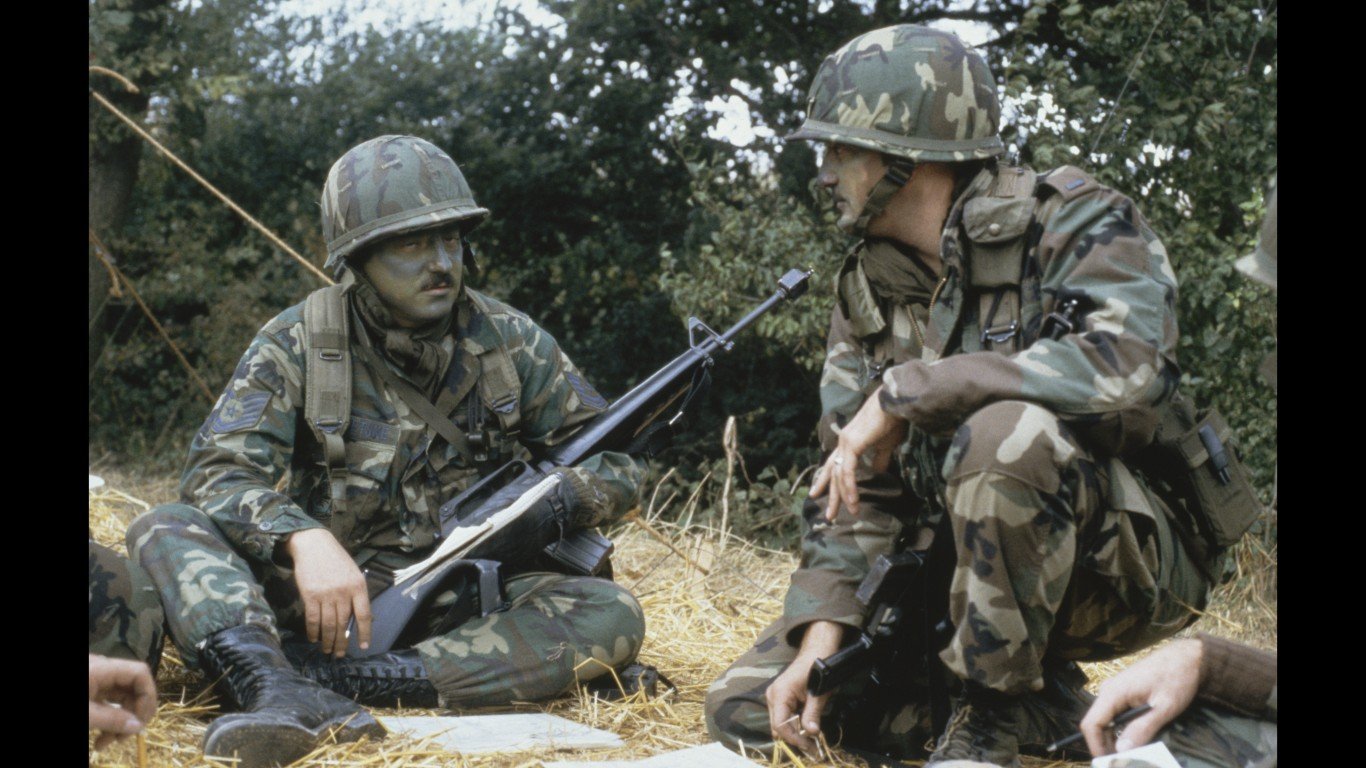
Invasion of Grenada (1983)
> Date ended: Nov 1, 1983
> How: Surrender of last Grenadian soldiers
Cold war President Ronald Reagan, concerned about the safety of Americans on the Caribbean island of Grenada, sent in 2,000 troops in late 1983. Grenada had been moving more toward the orbit of communist Cuba.
Grenada’s government was run by a Marxist, who had assassinated another leftist opponent and had seized power earlier in 1983. Protestors took to the streets and violence escalated. The U.S. fought with Grenadian troops and Cuban military advisors. The Grenadian government was replaced by one that was more acceptable to the United States.

Invasion of Panama (1989-1990)
> Date ended: Jan 31, 1990
> How: U.S. ends operations
The United States invaded Panama to overthrow dictator Manuel Noriega, who had been indicted in the United States on drug trafficking charges and was accused of clamping down on democracy in Panama and endangering American nationals. Noriega was forced to seek asylum with the Vatican anuncio in Panama City, where he surrendered on Jan. 3, 1990.
Noriega’s story is a bit more complicated, however. He was recruited by the CIA in 1970 to combat communism in Central America. When he got involved in drug trafficking, the CIA kicked him off the payroll in 1977 but brought him back, and he became dictator of Panama. Noriega continued to traffic in drugs. Just as concerning to the U.S. government, it was reported he was a double agent for Cuba’s intelligence services. The U.S. then disowned Noriega.
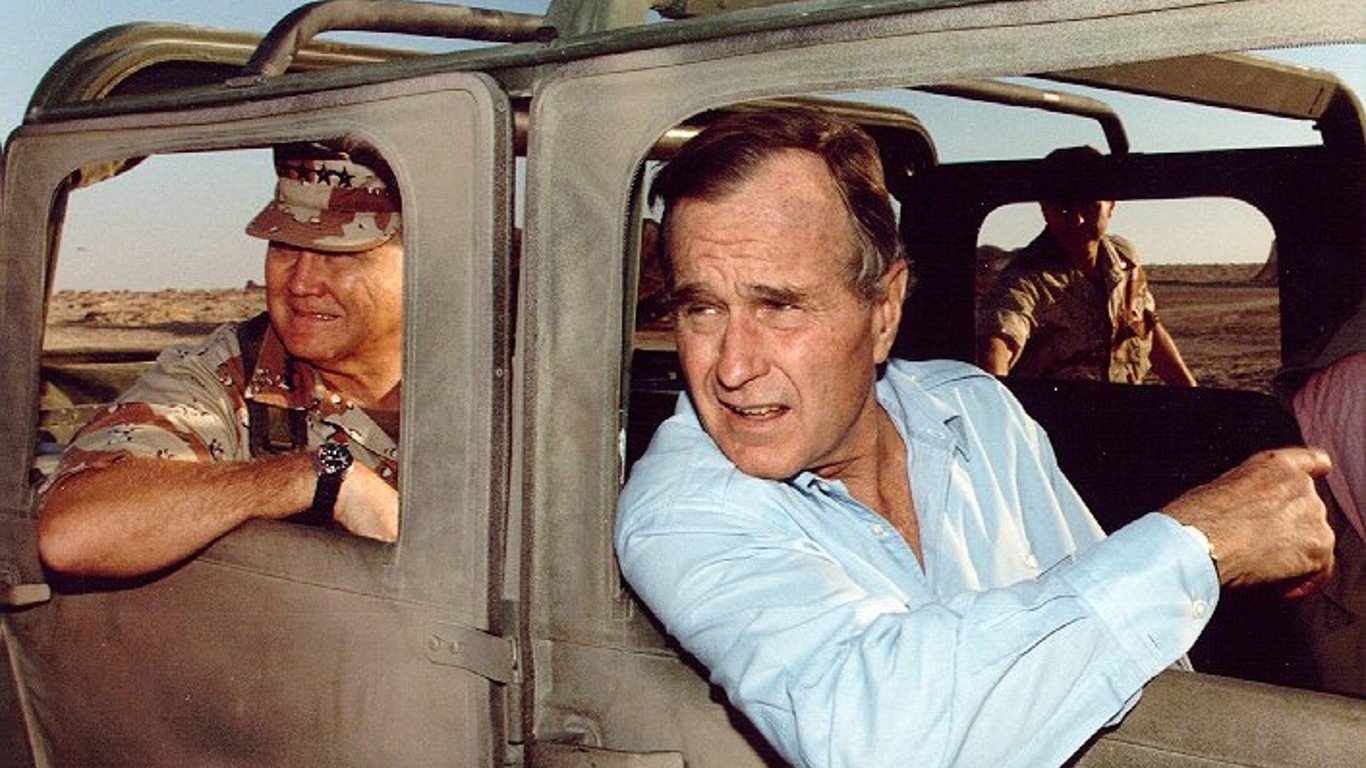
Gulf War (1990-1991)
> Date ended: Feb 28, 1991
> How: Iraqi retreat, Bush declares ceasefire
After Iraq invaded Kuwait, a U.S.-led coalition helped push Iraqi forces from the Gulf nation. America and its massive coalition humiliated what had been the world’s fifth-largest army in a matter of hours in February 1991. Iraq accepted the U.N. Security Council’s resolution that officially ended the Gulf War. Iraq President Saddam Hussein agreed to relinquish all weapons of mass destruction and pay damages for Iraq’s seven-month occupation of Kuwait.
[in-text-ad-2]

War in Afghanistan (2001-2021)
> Date ended: Aug 30, 2021
> How: American withdrawal
After the terrorist attacks on Sept. 11, 2001, the U.S. declared a war on terror. Because the Taliban regime in Afghanistan had been harboring 9/11 mastermind Osama bin Laden, the U.S. along with its Afghan ally the Northern Alliance and other allied nations, launched an invasion. After 61 days of fighting, the Taliban stronghold of Kandahar fell in December. The Afghan capital of Kabul had been seized the previous month.
Surrender did not mean the end of the Taliban, who continued guerrilla activity and fought on against U.S. and allied troops. Shortly after the U.S. left Afghanistan in August 2021, the Taliban prevailed.
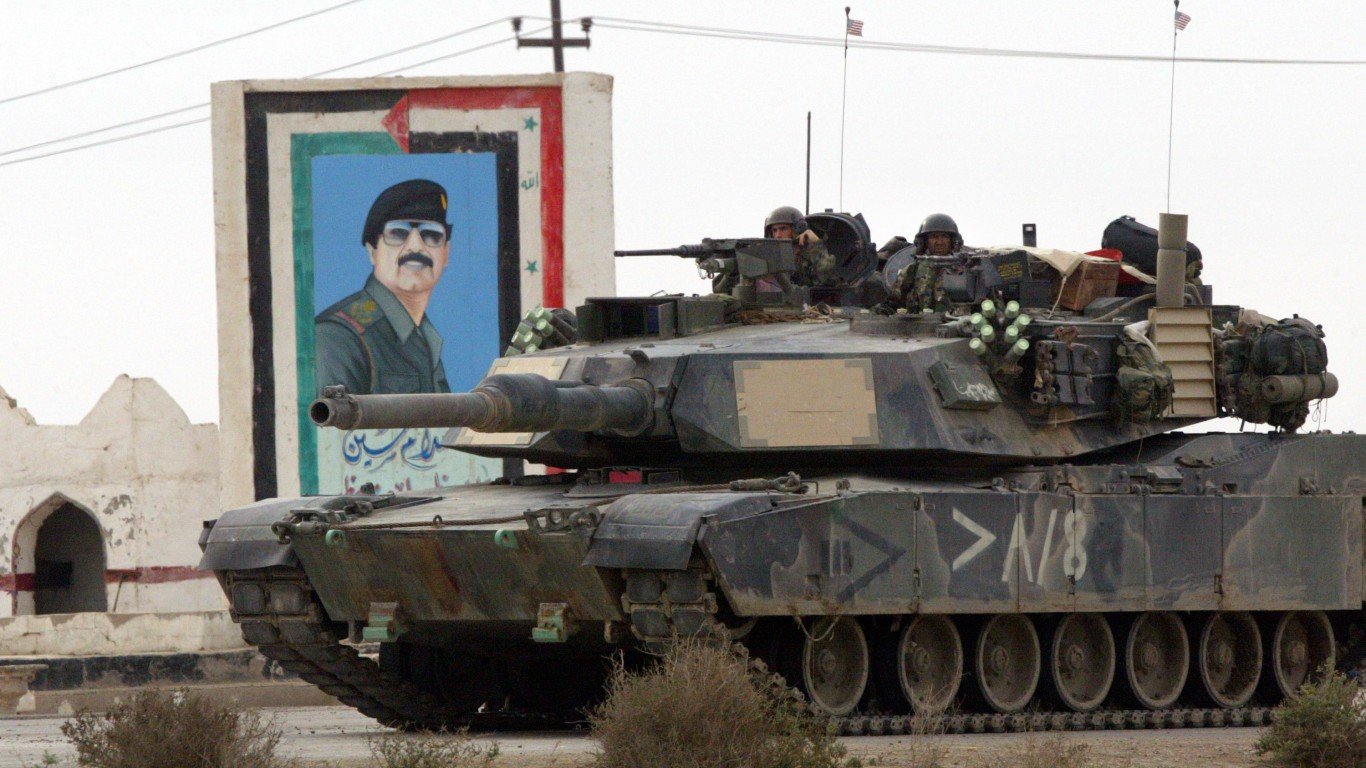
Iraq War (2003-2011)
> Date ended: Dec. 18, 2011
> How: American withdrawal
The United States claimed Iraq was involved in terrorism and possessed weapons of mass destruction such as poison gas. The U.S. used diplomatic pressure to persuade Iraqi dictator Saddam Hussein to turn over the weapons. When this failed to achieve results, President George W. Bush ordered massive airstrikes on Iraq that preceded an invasion.
The U.S.-led coalition overthrew the Hussein regime. Hussein was captured, tried, and executed. But the fighting in Iraq continued with insurgents who opposed the establishment of a new government. The U.S. boosted its troop strength, and with forces led by Gen. David Petraeus was able to reduce insurgency effectiveness. America started cutting its forces in Iraq in 2007, and by the end of 2011, all American troops had exited the country.
Take This Retirement Quiz To Get Matched With A Financial Advisor (Sponsored)
Take the quiz below to get matched with a financial advisor today.
Each advisor has been vetted by SmartAsset and is held to a fiduciary standard to act in your best interests.
Here’s how it works:
1. Answer SmartAsset advisor match quiz
2. Review your pre-screened matches at your leisure. Check out the advisors’ profiles.
3. Speak with advisors at no cost to you. Have an introductory call on the phone or introduction in person and choose whom to work with in the future
Take the retirement quiz right here.
Thank you for reading! Have some feedback for us?
Contact the 24/7 Wall St. editorial team.
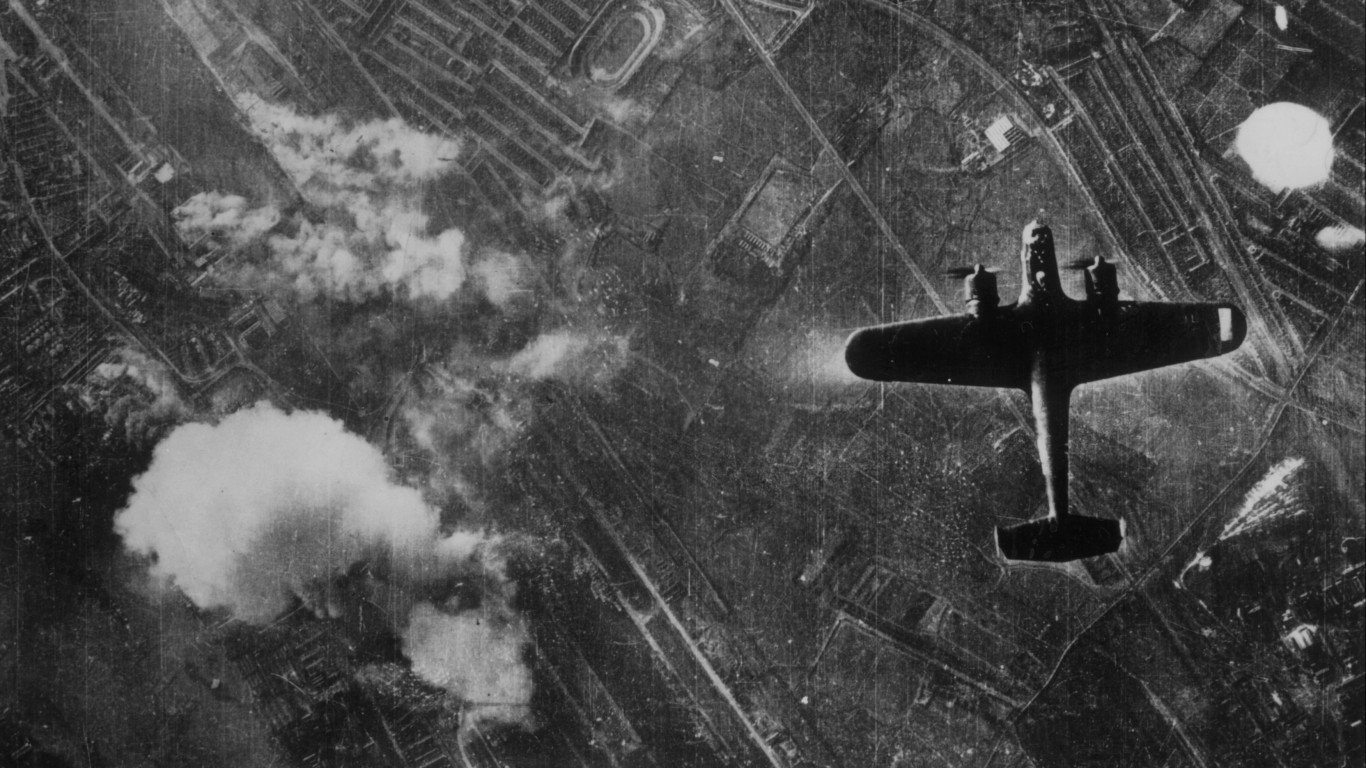 24/7 Wall St.
24/7 Wall St.

